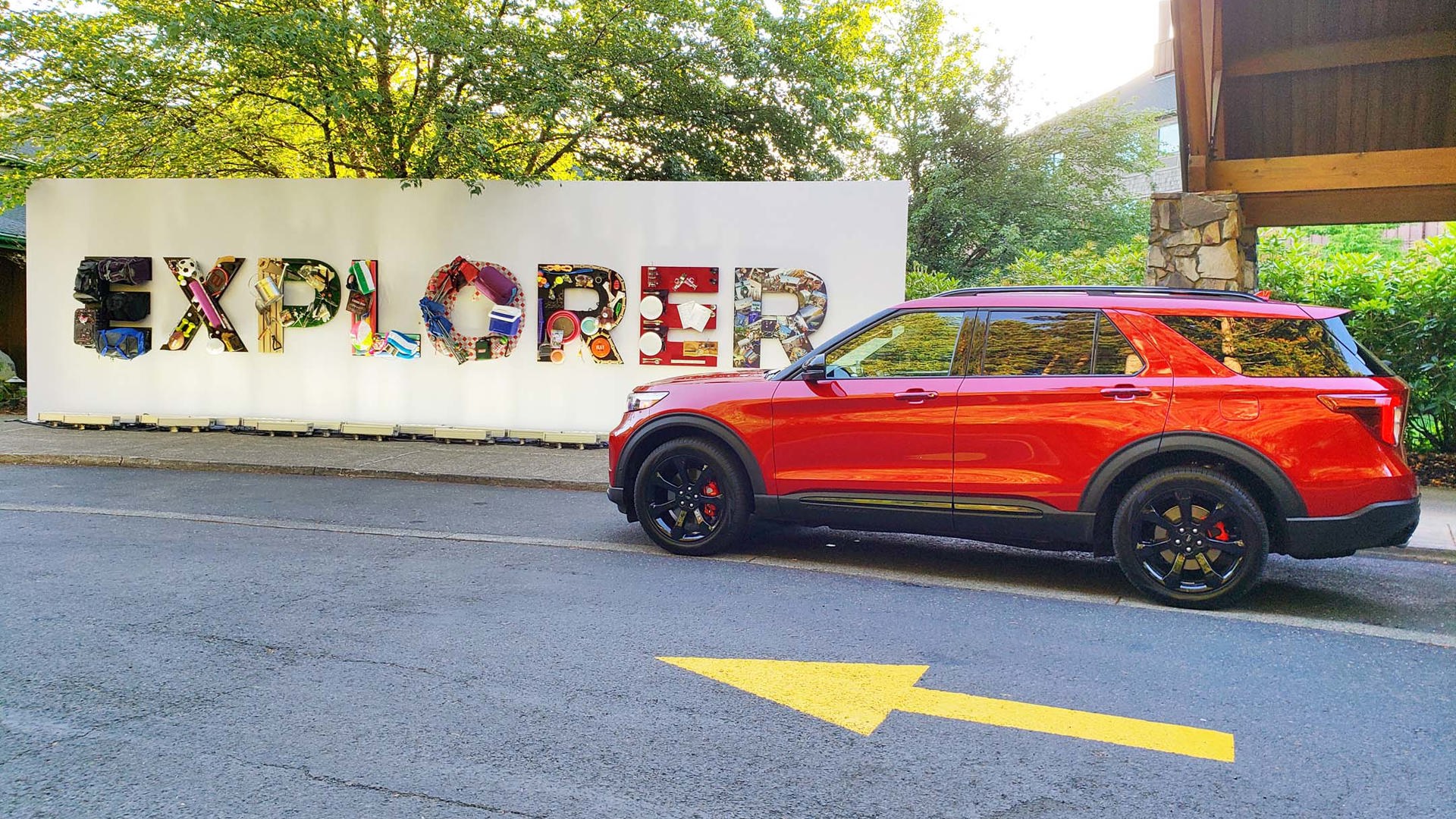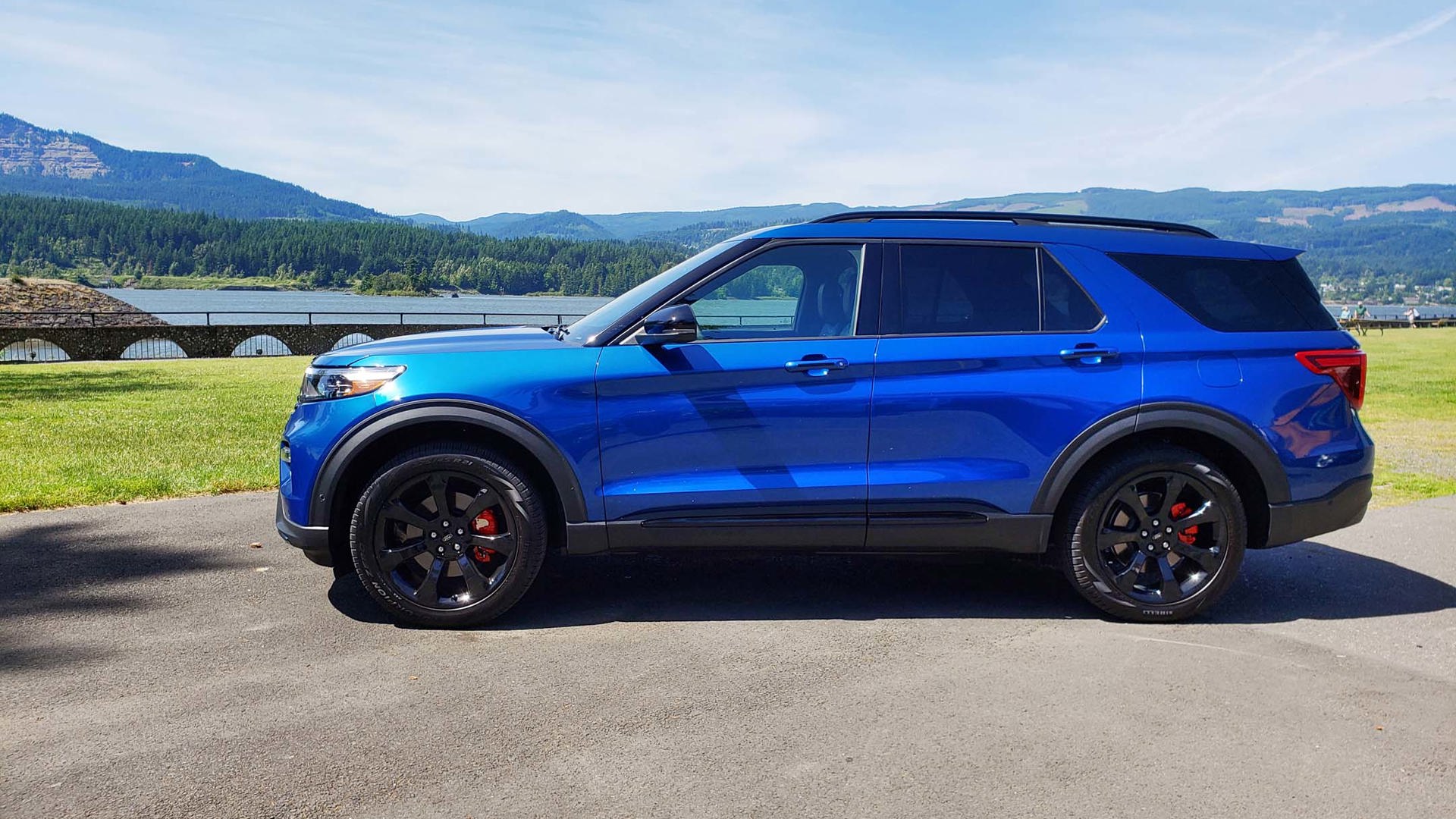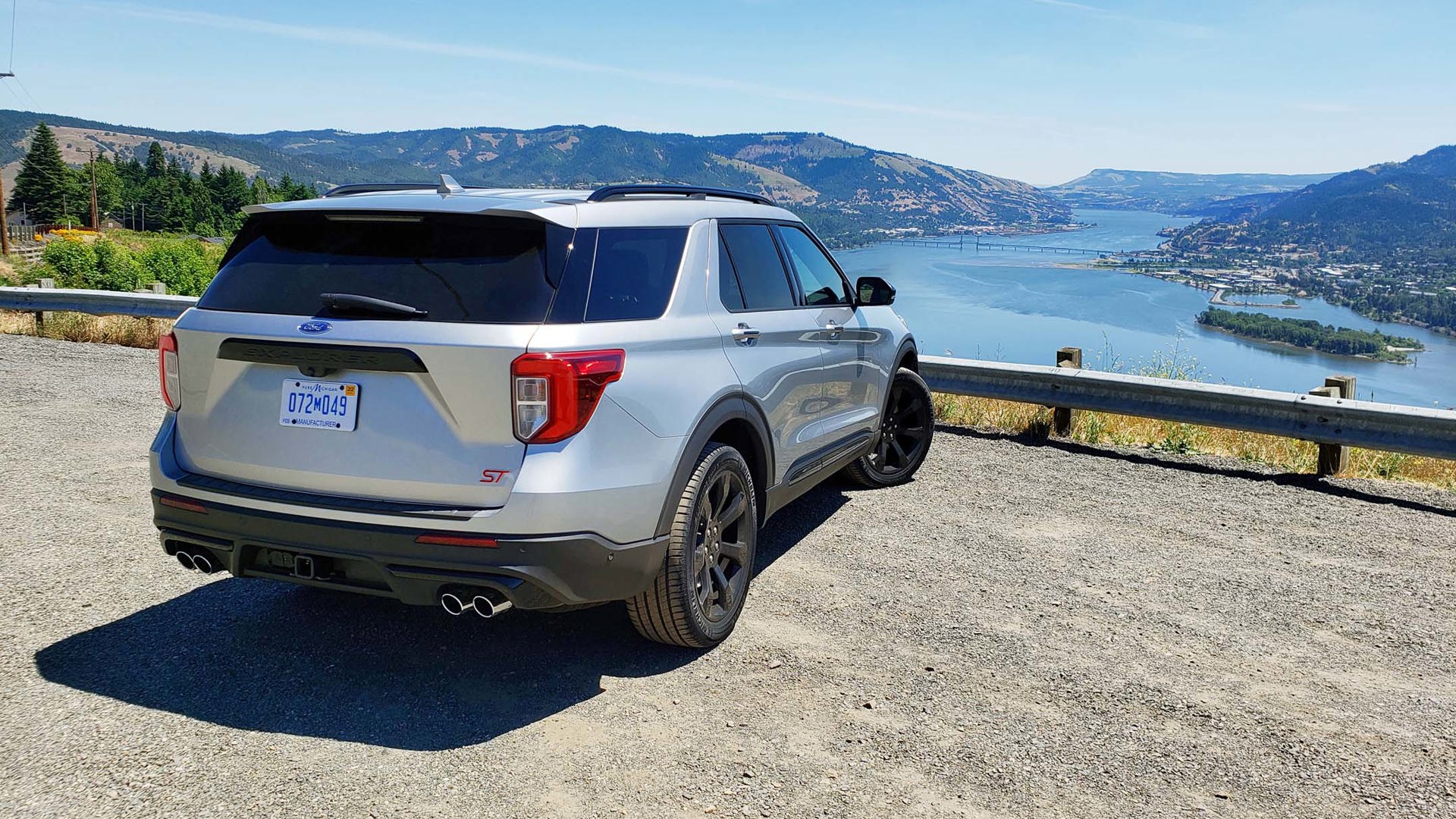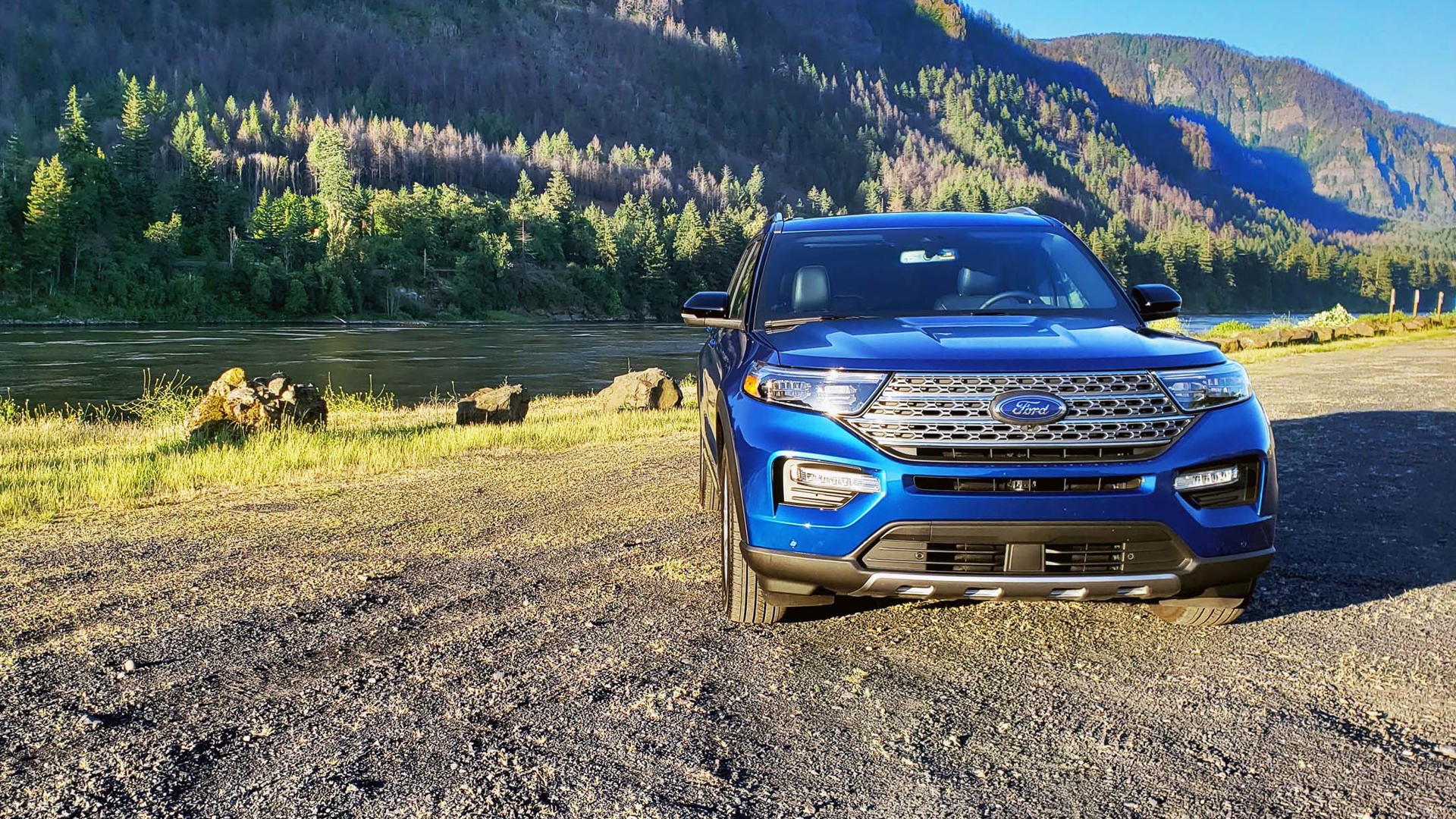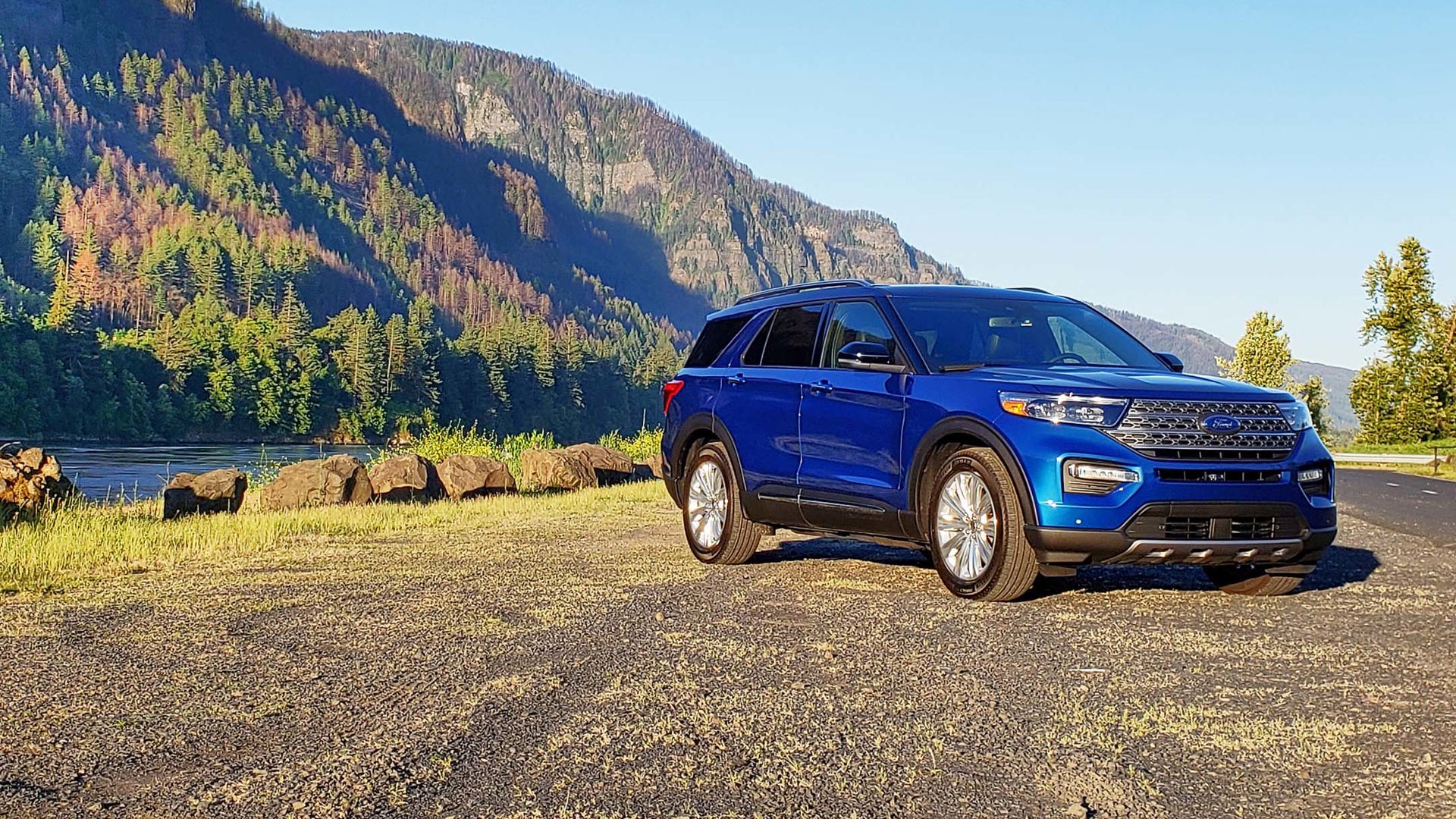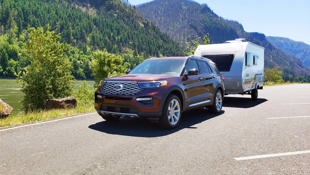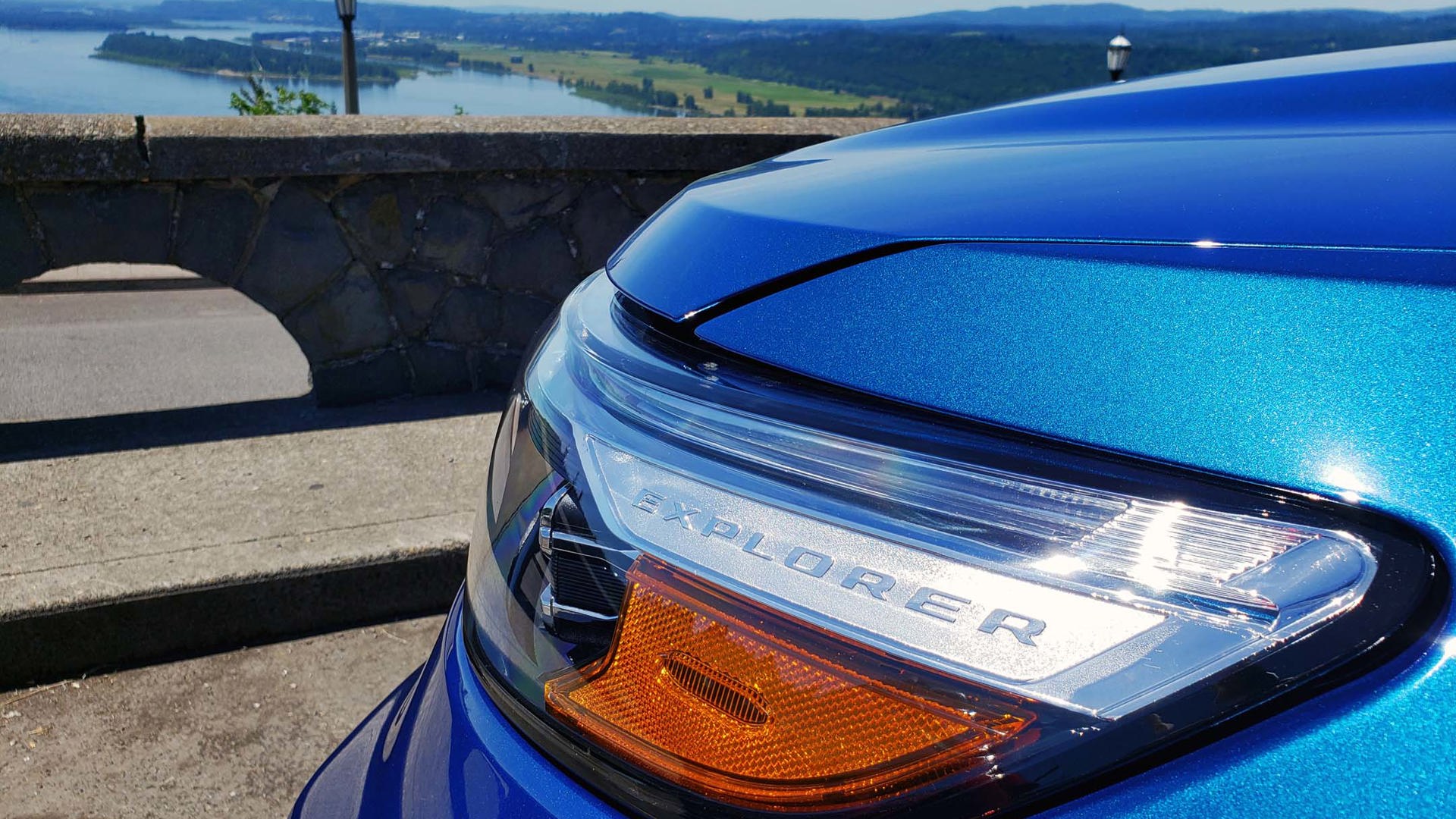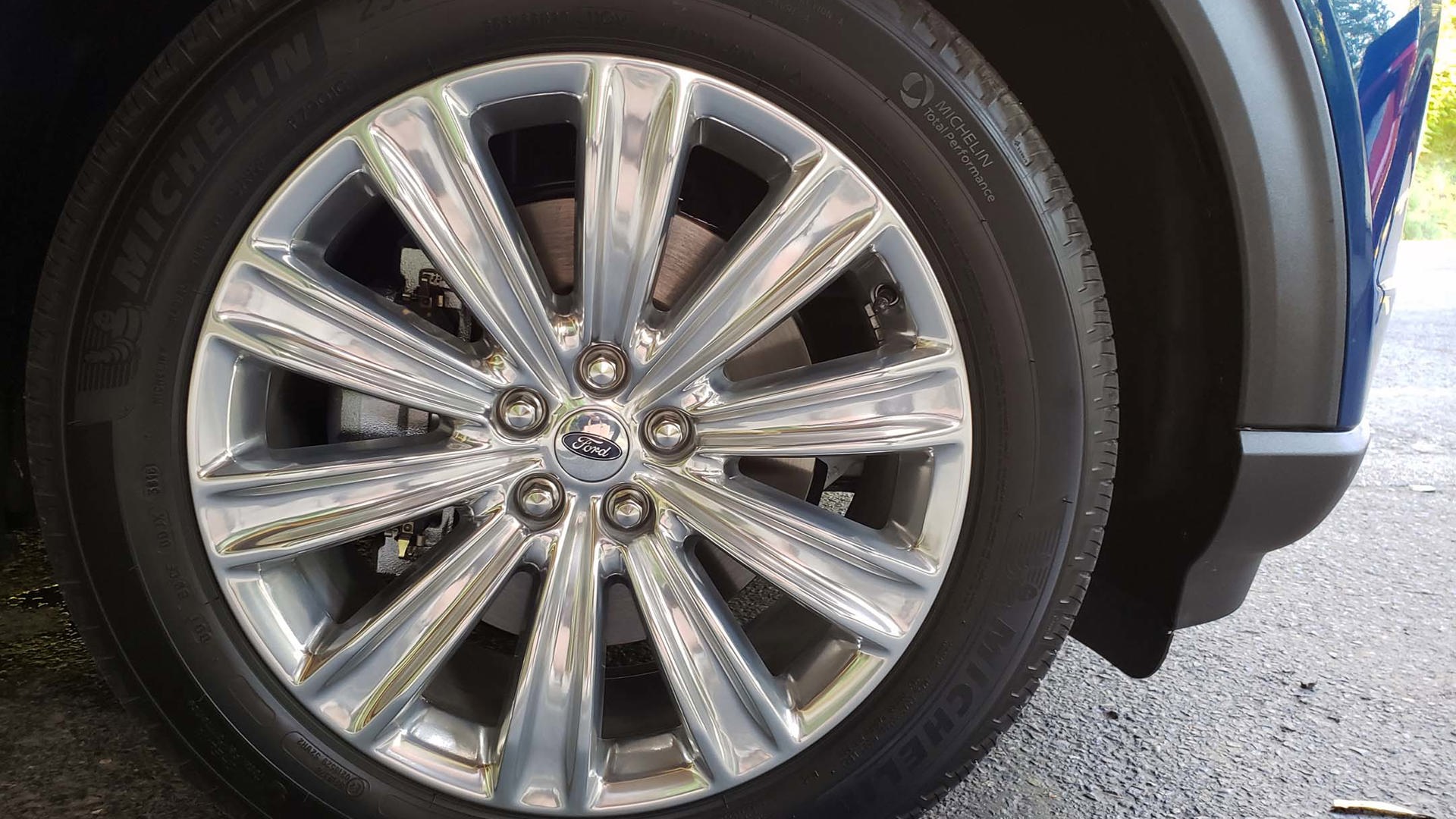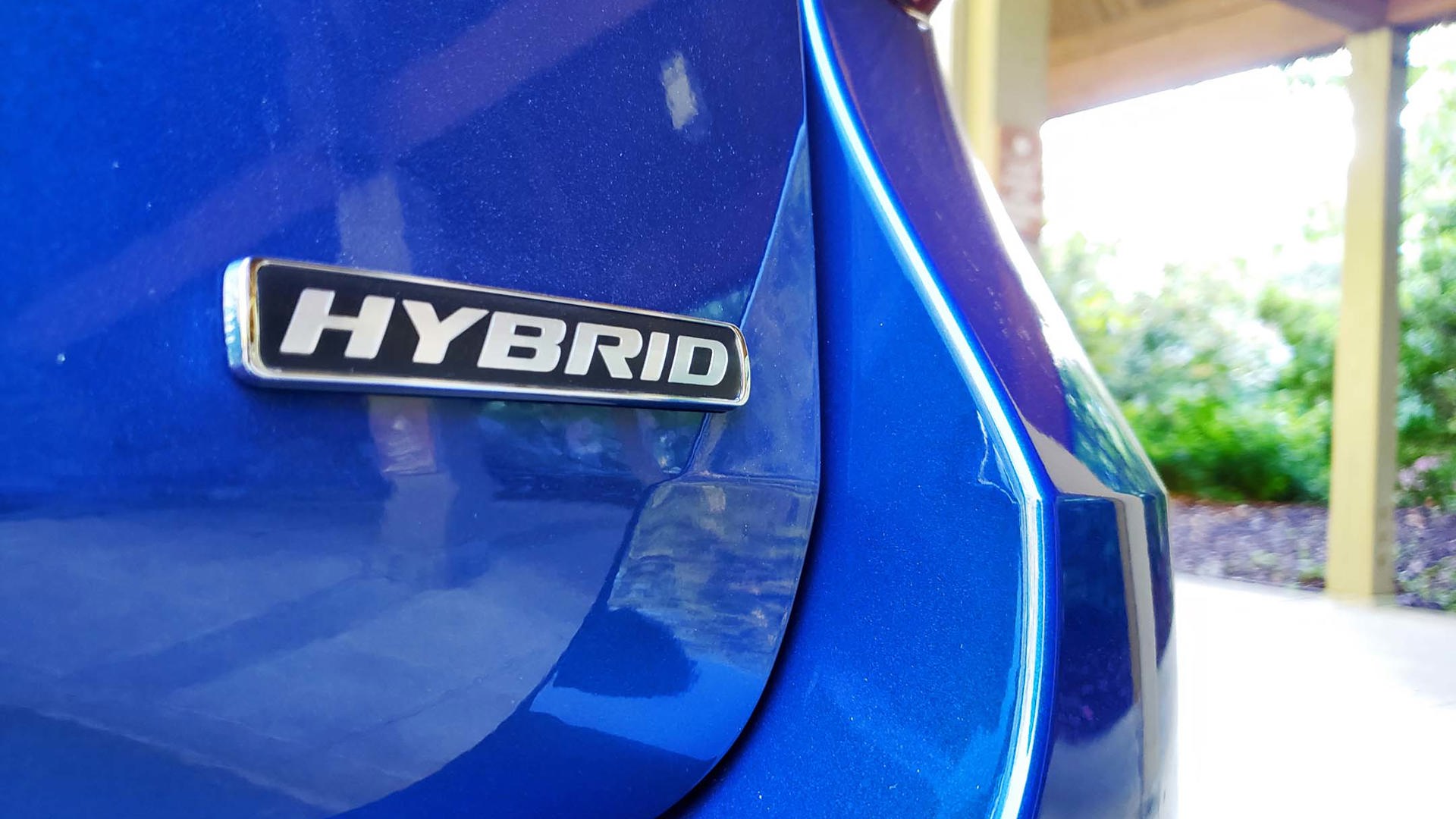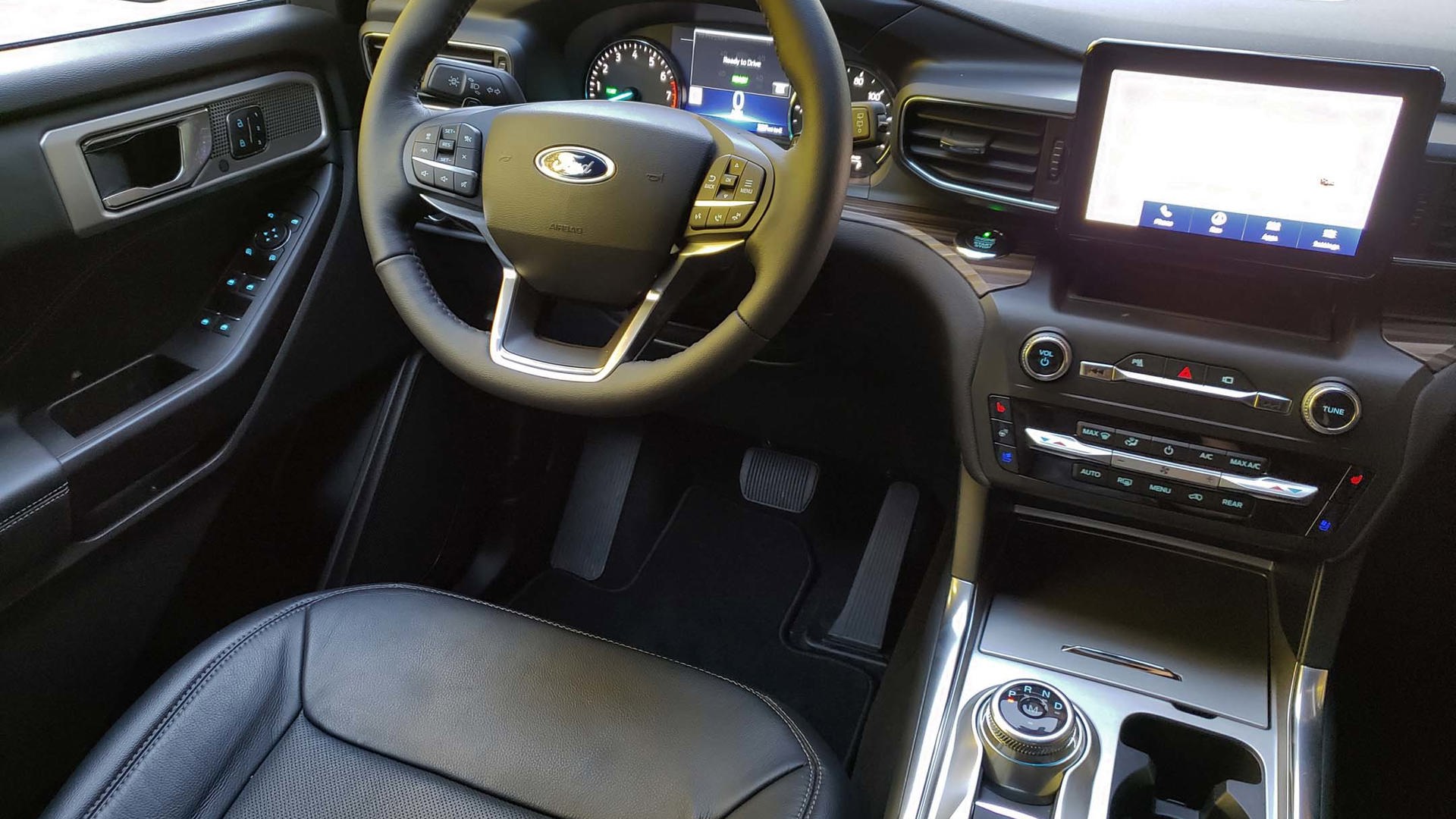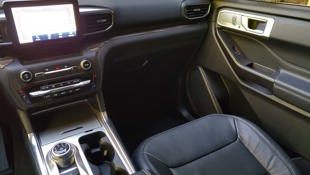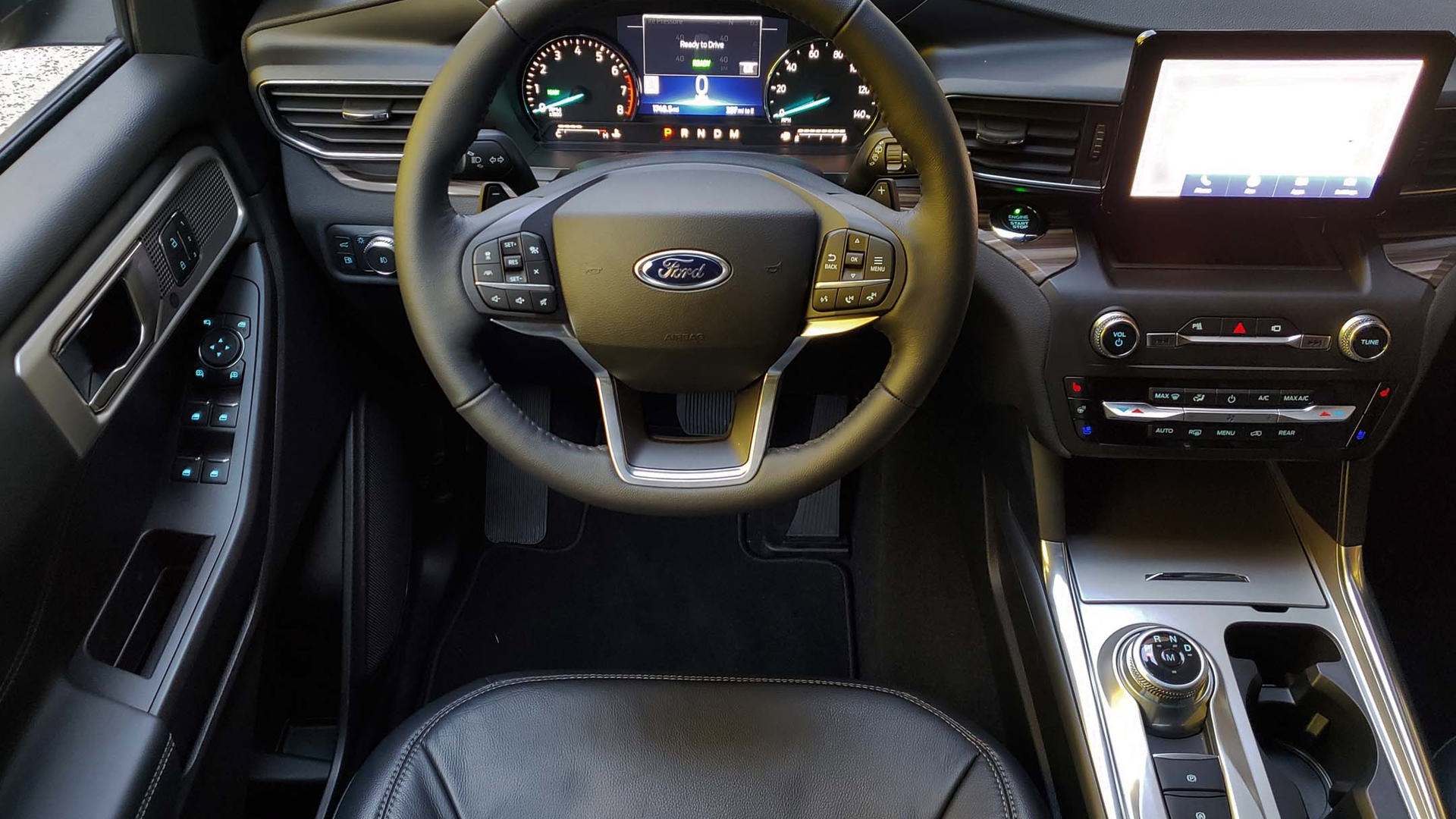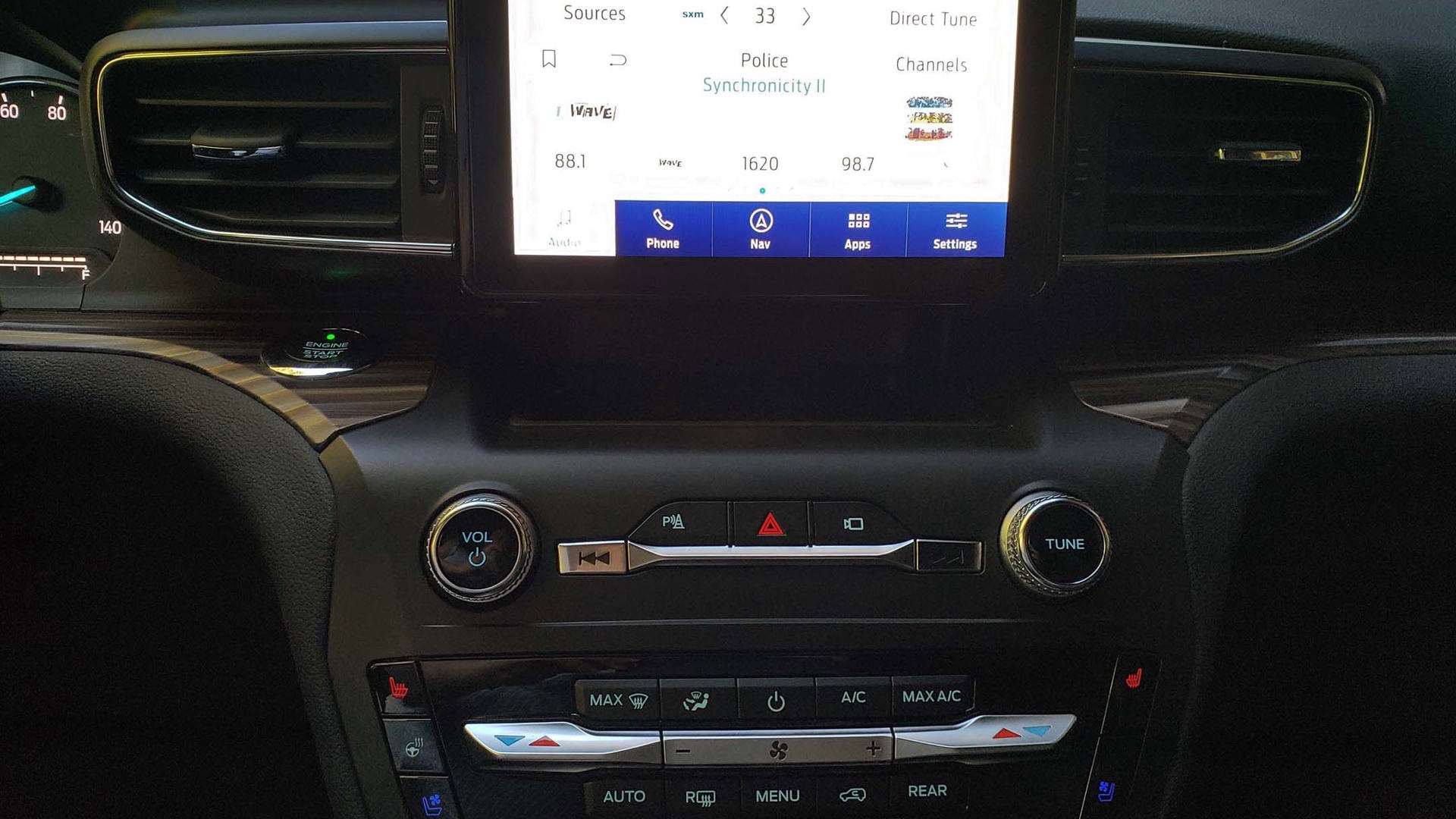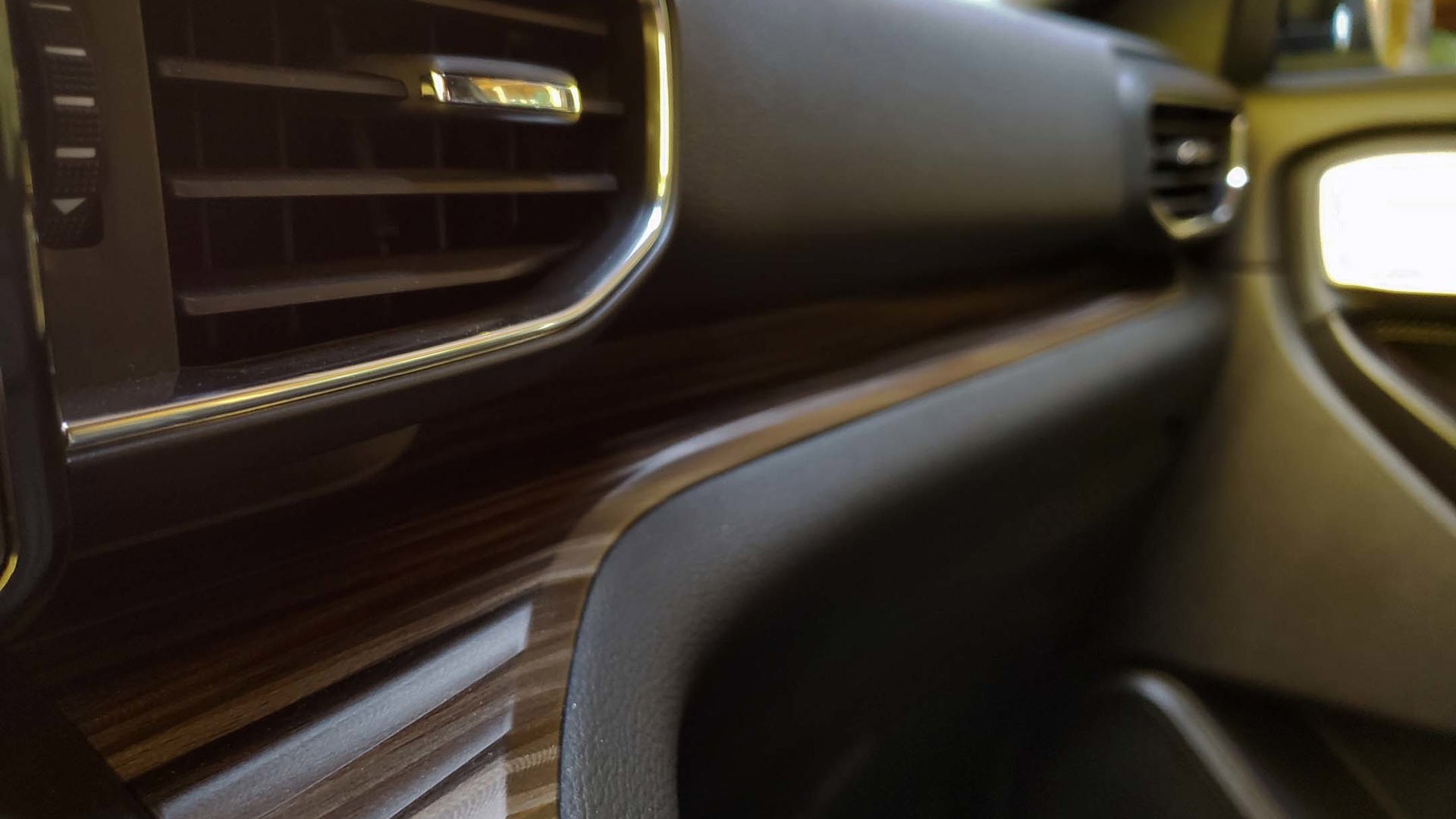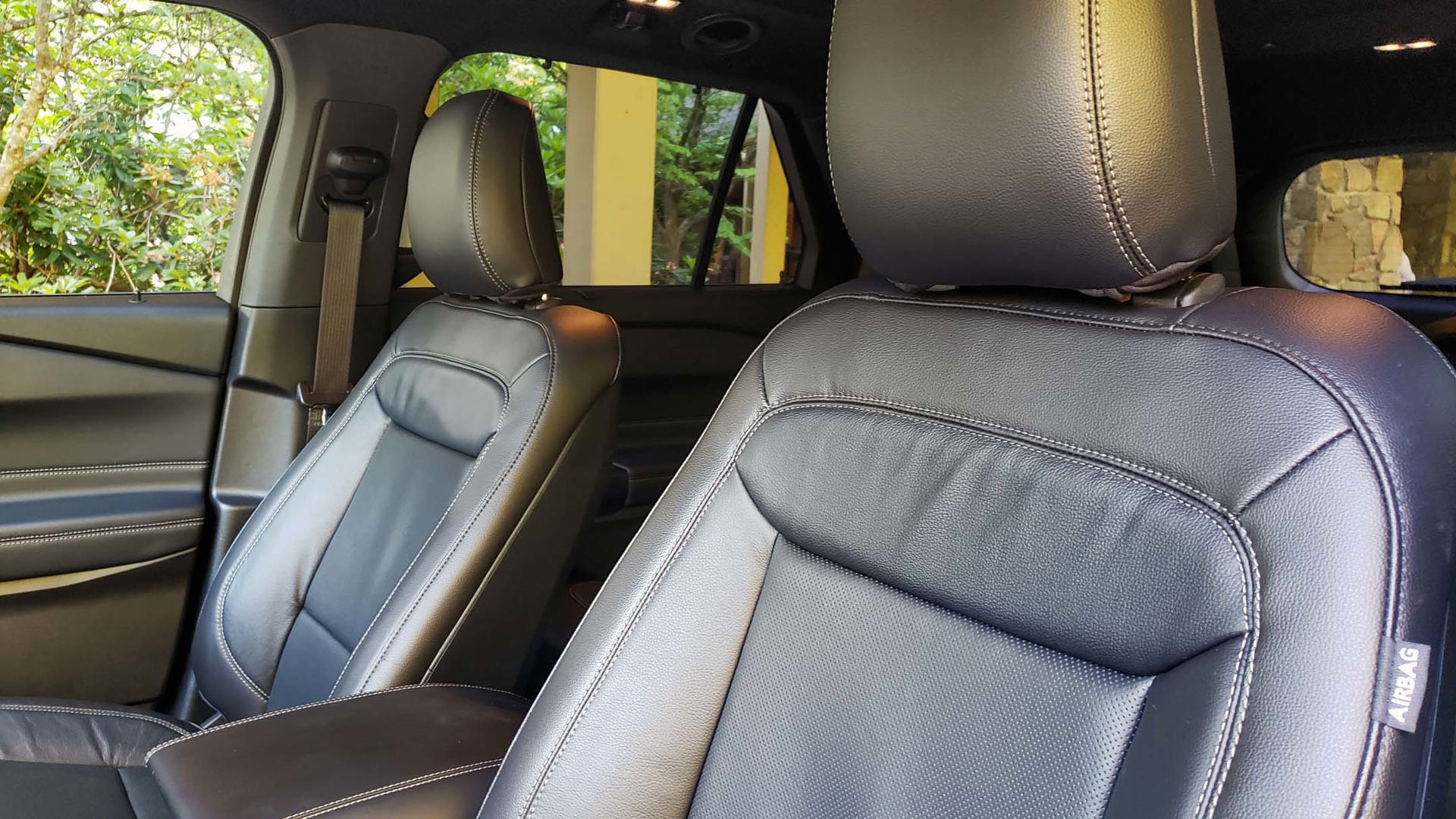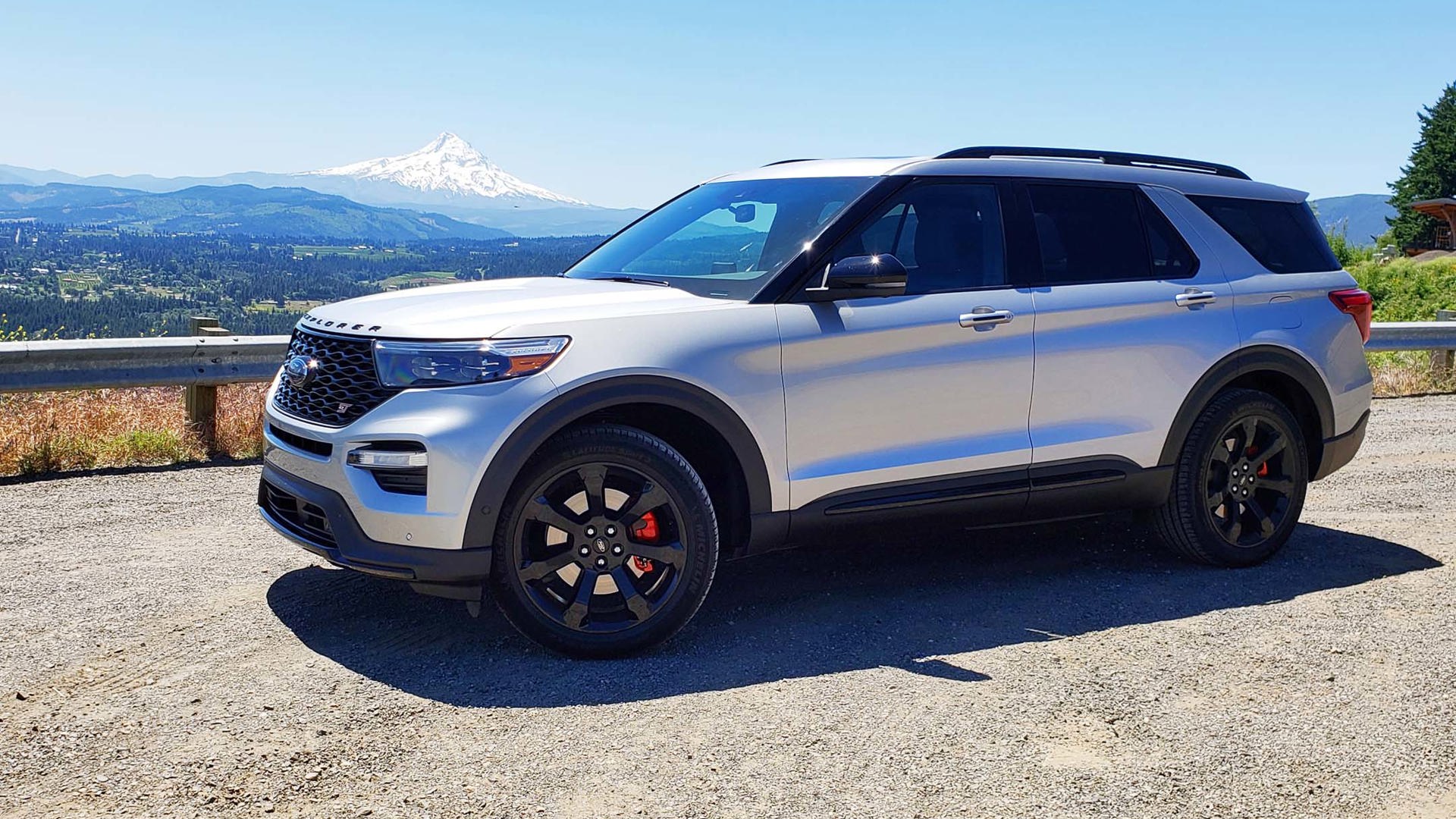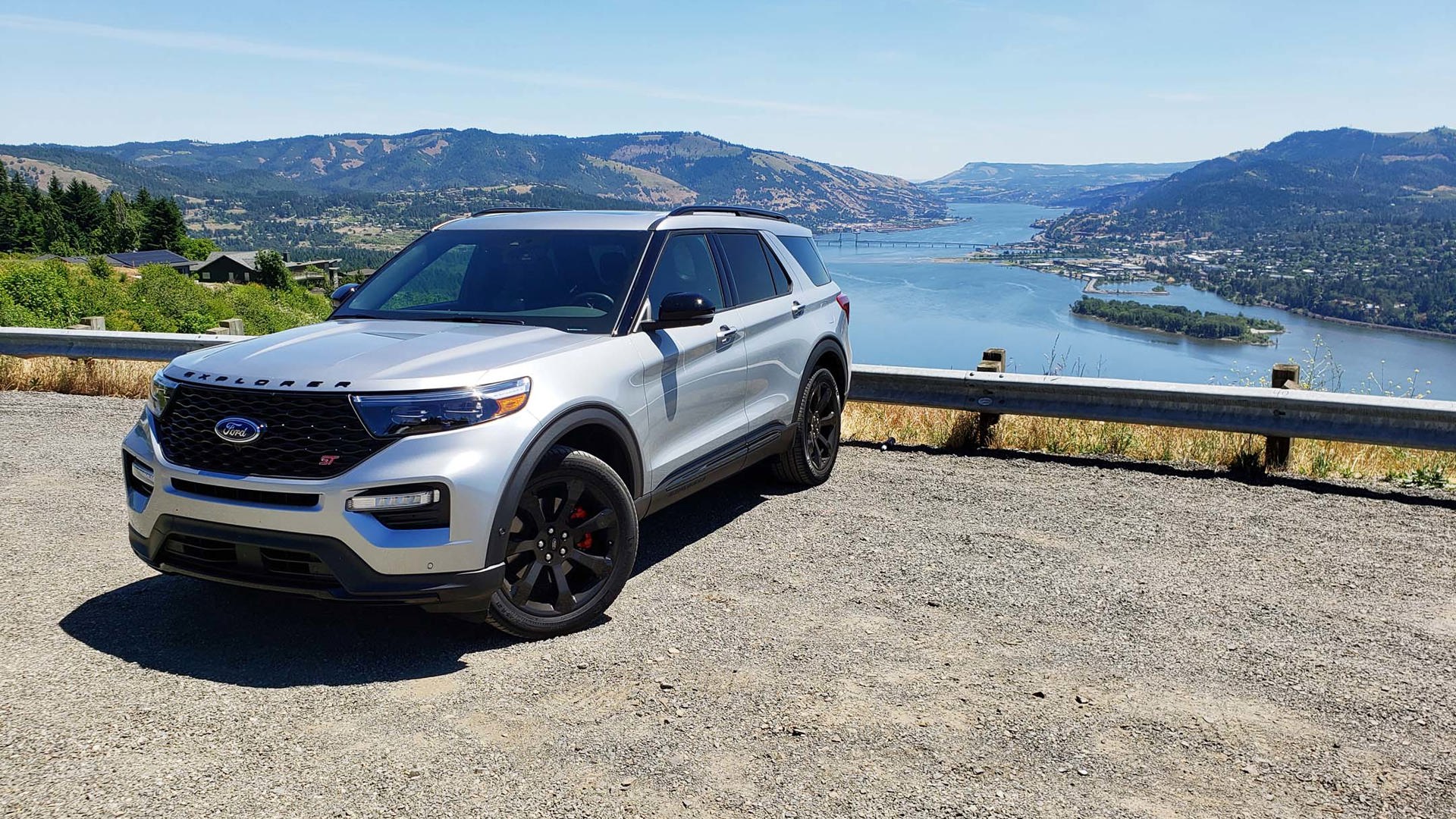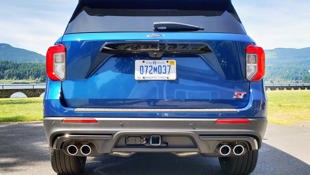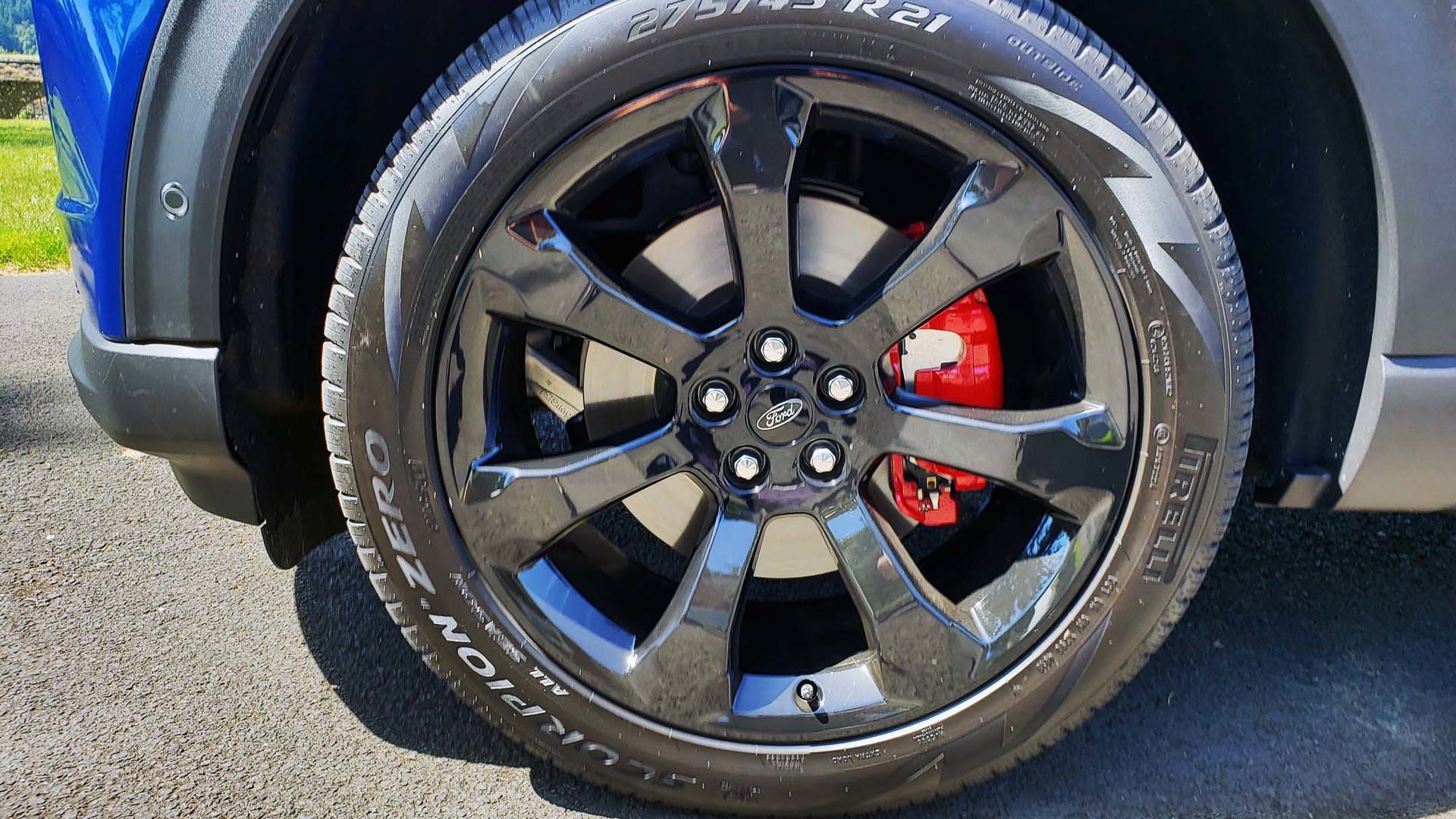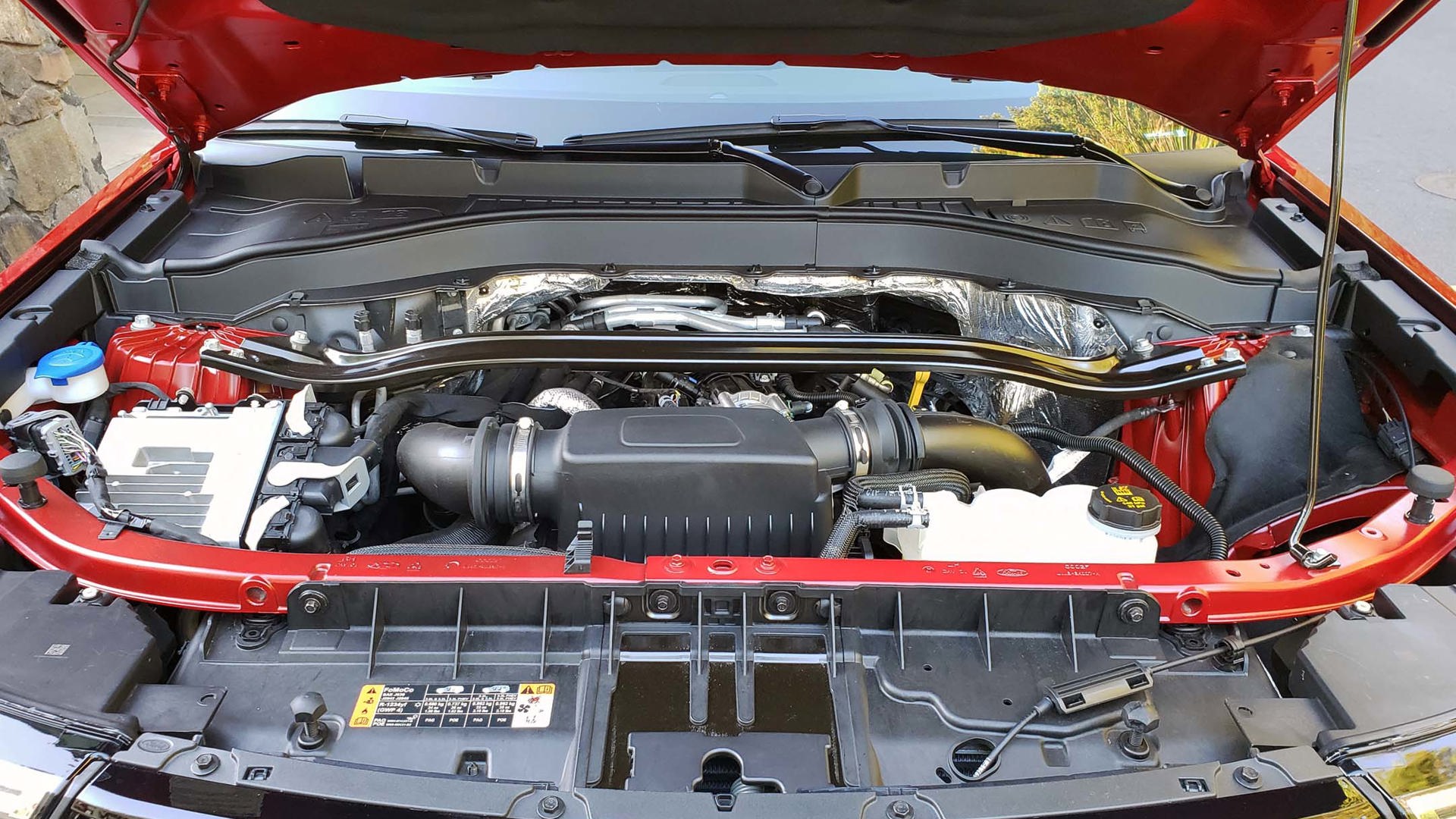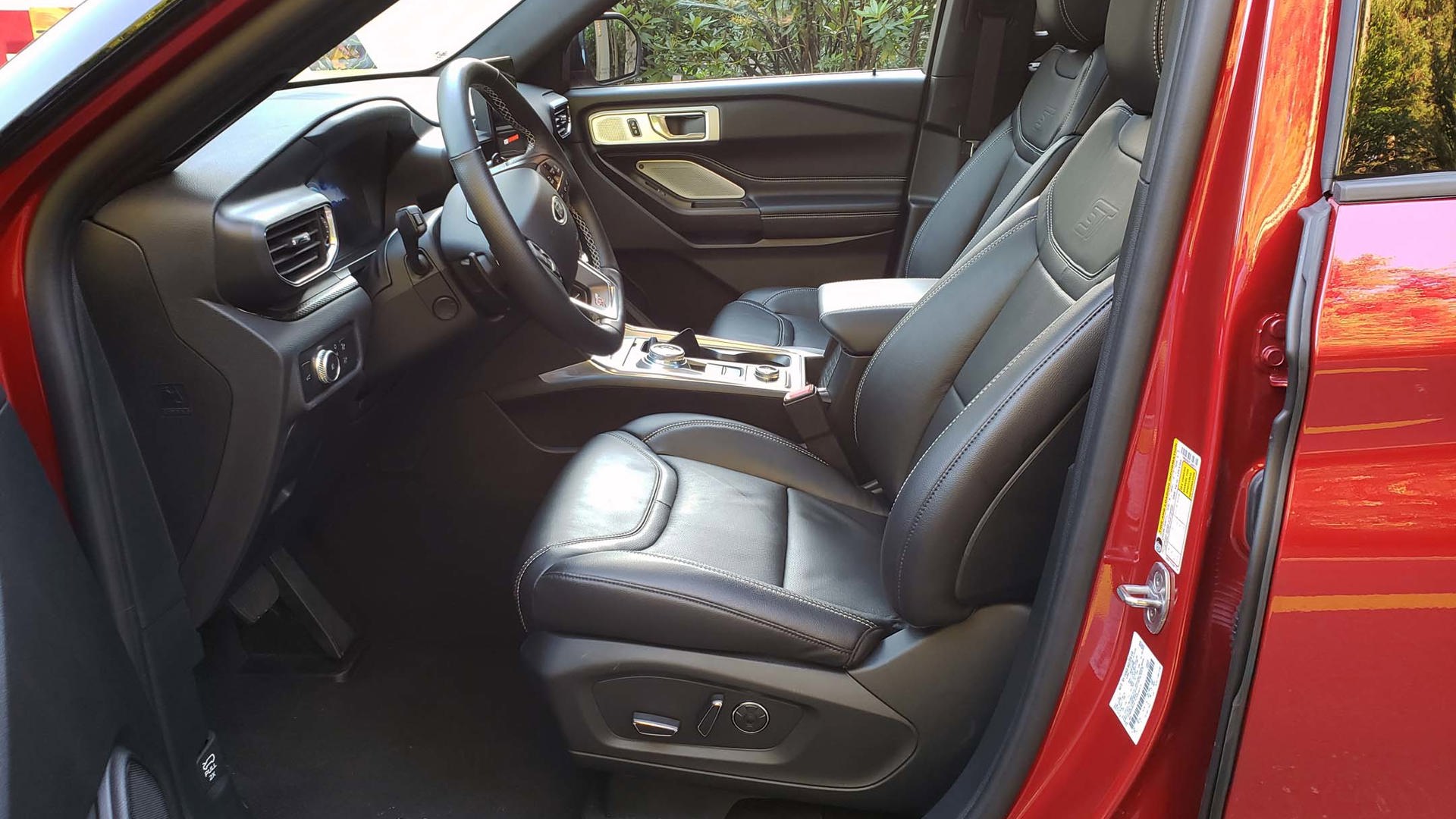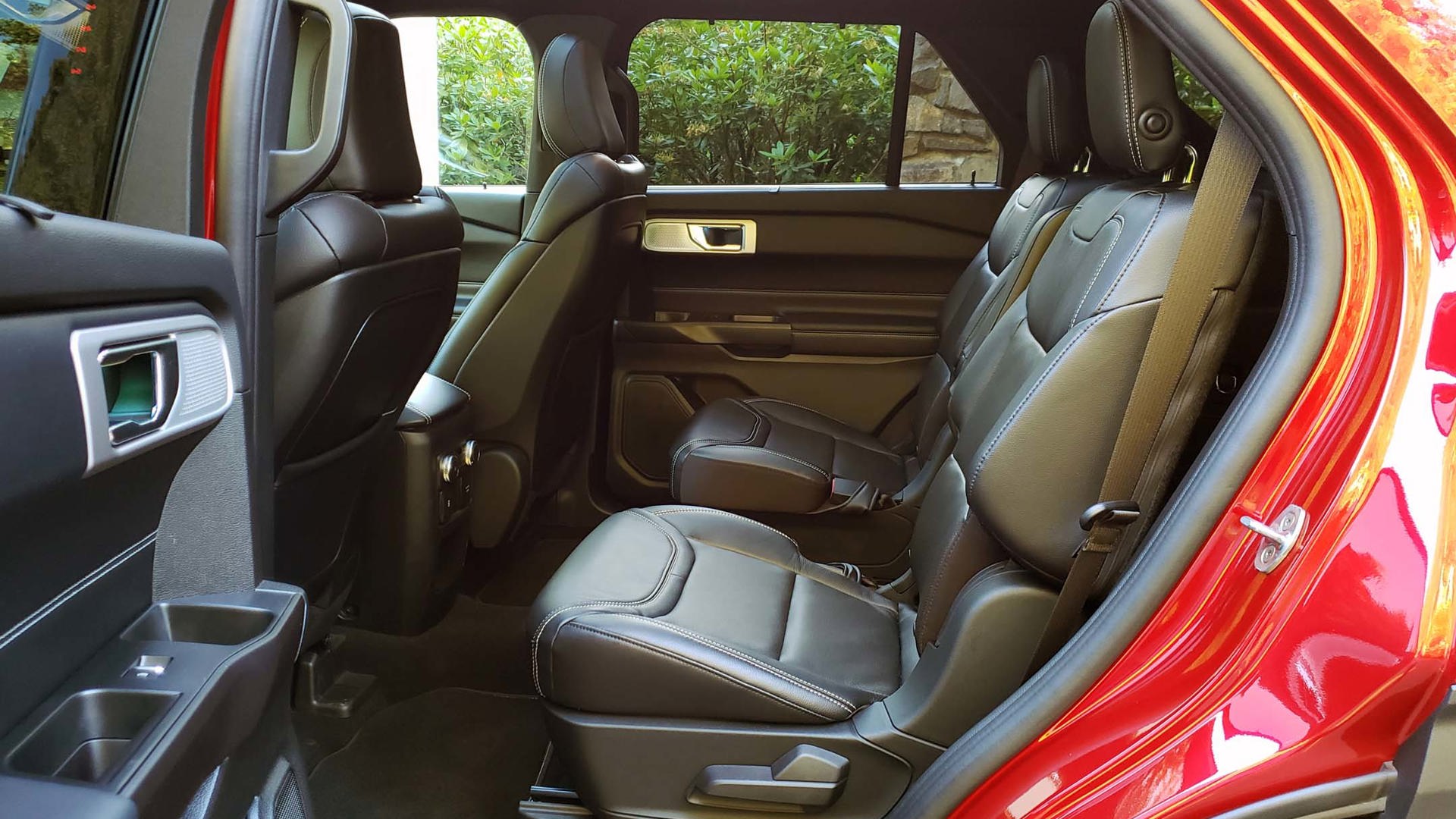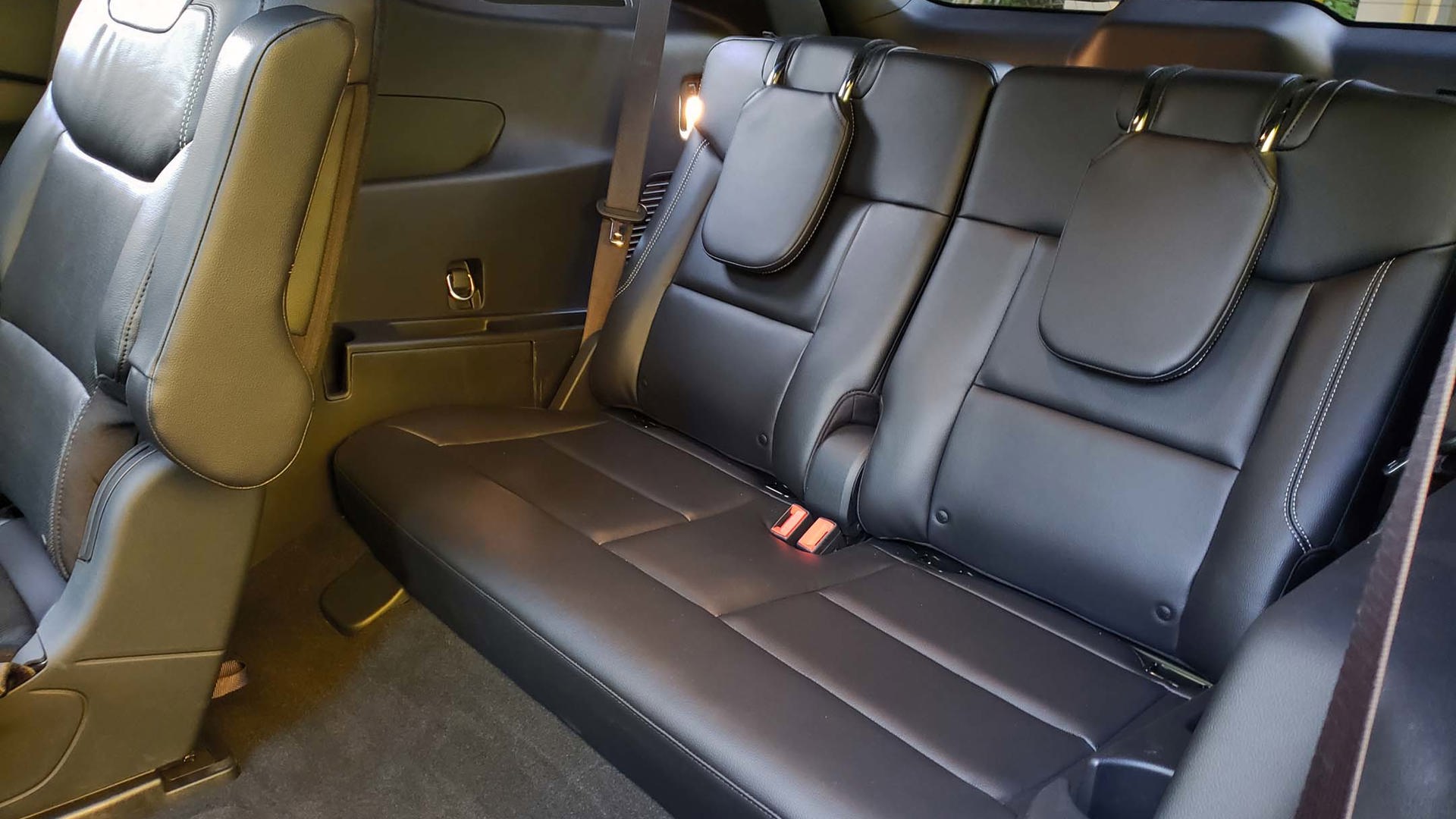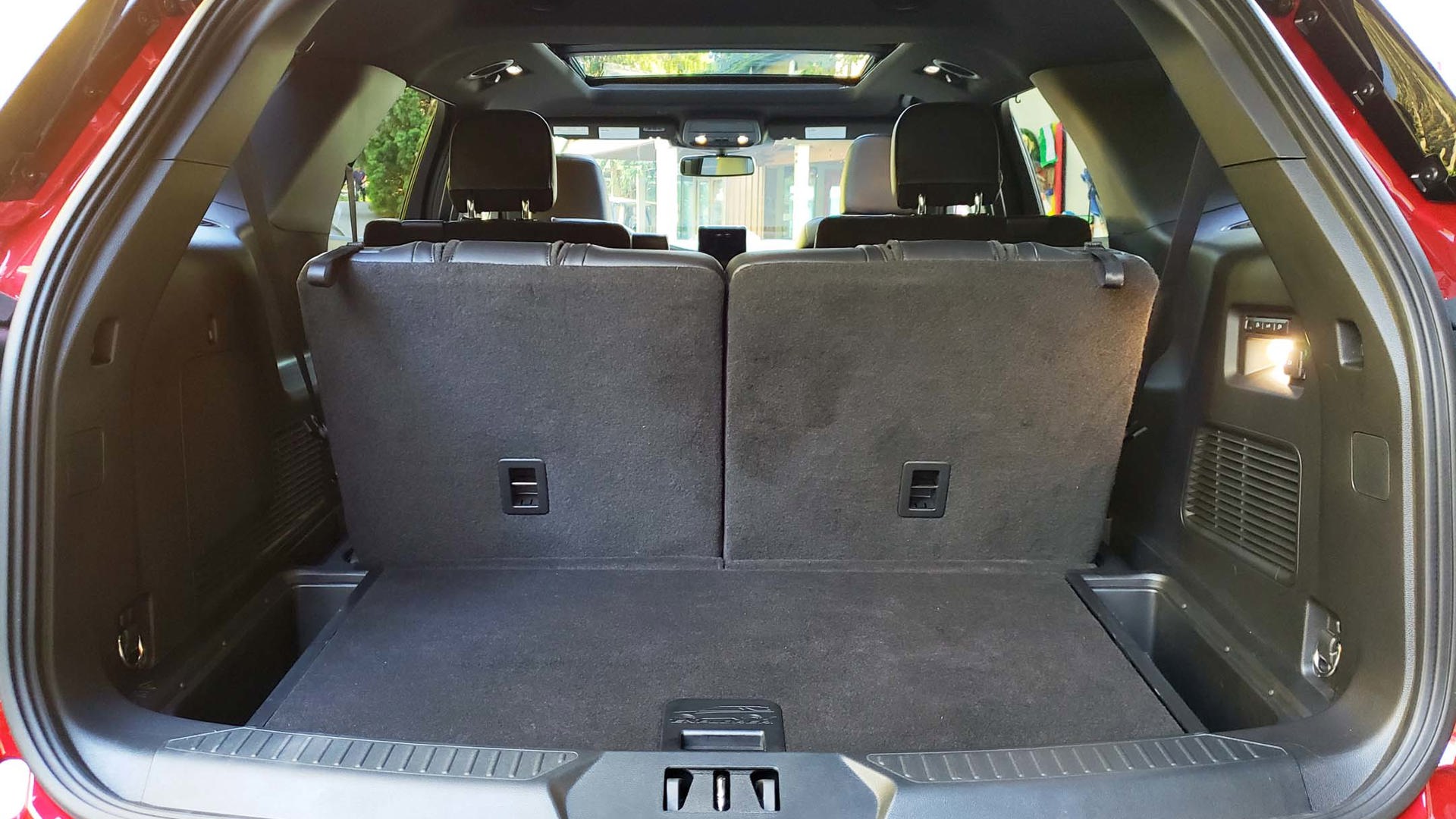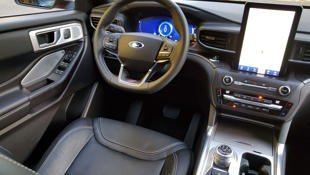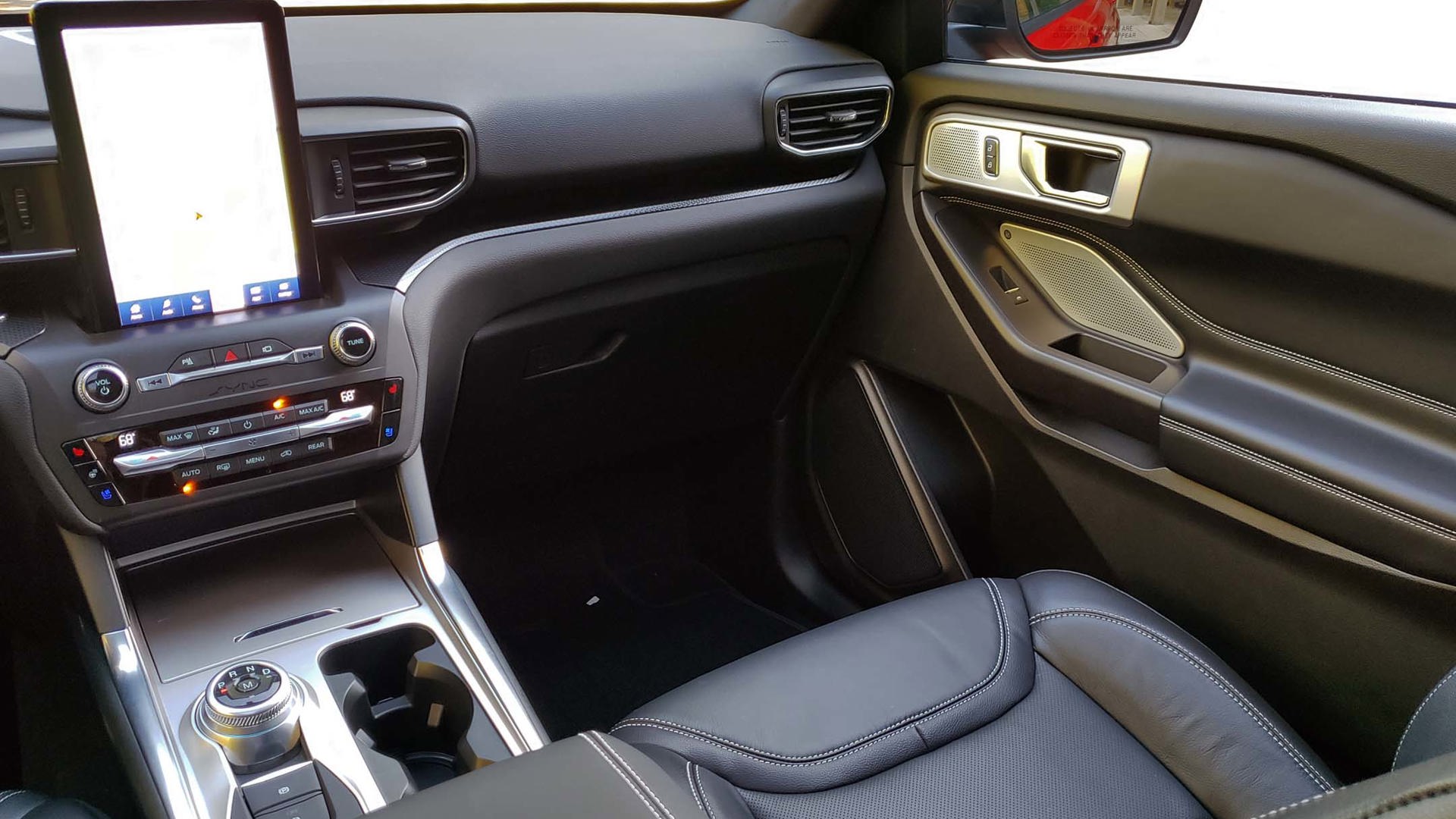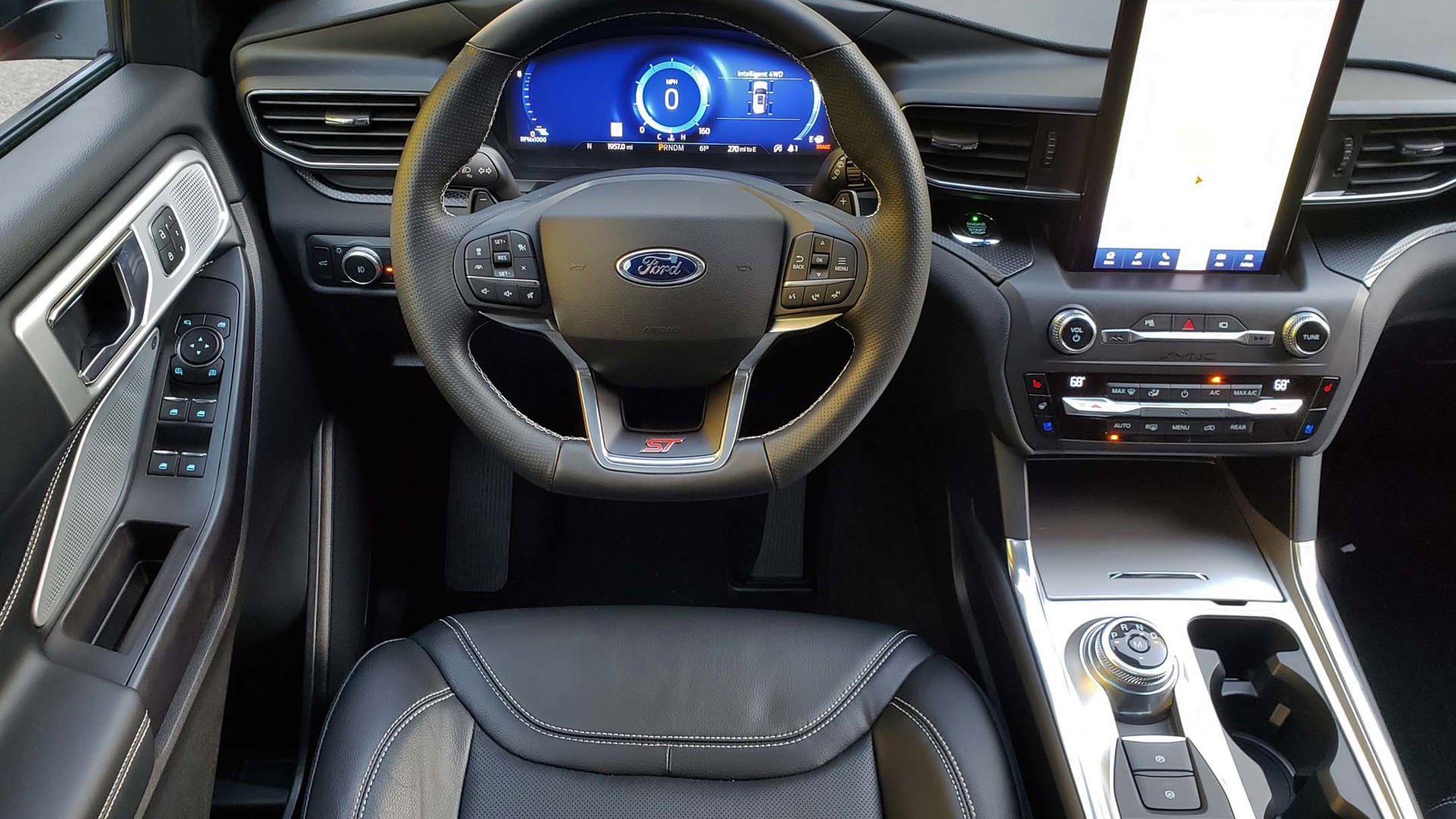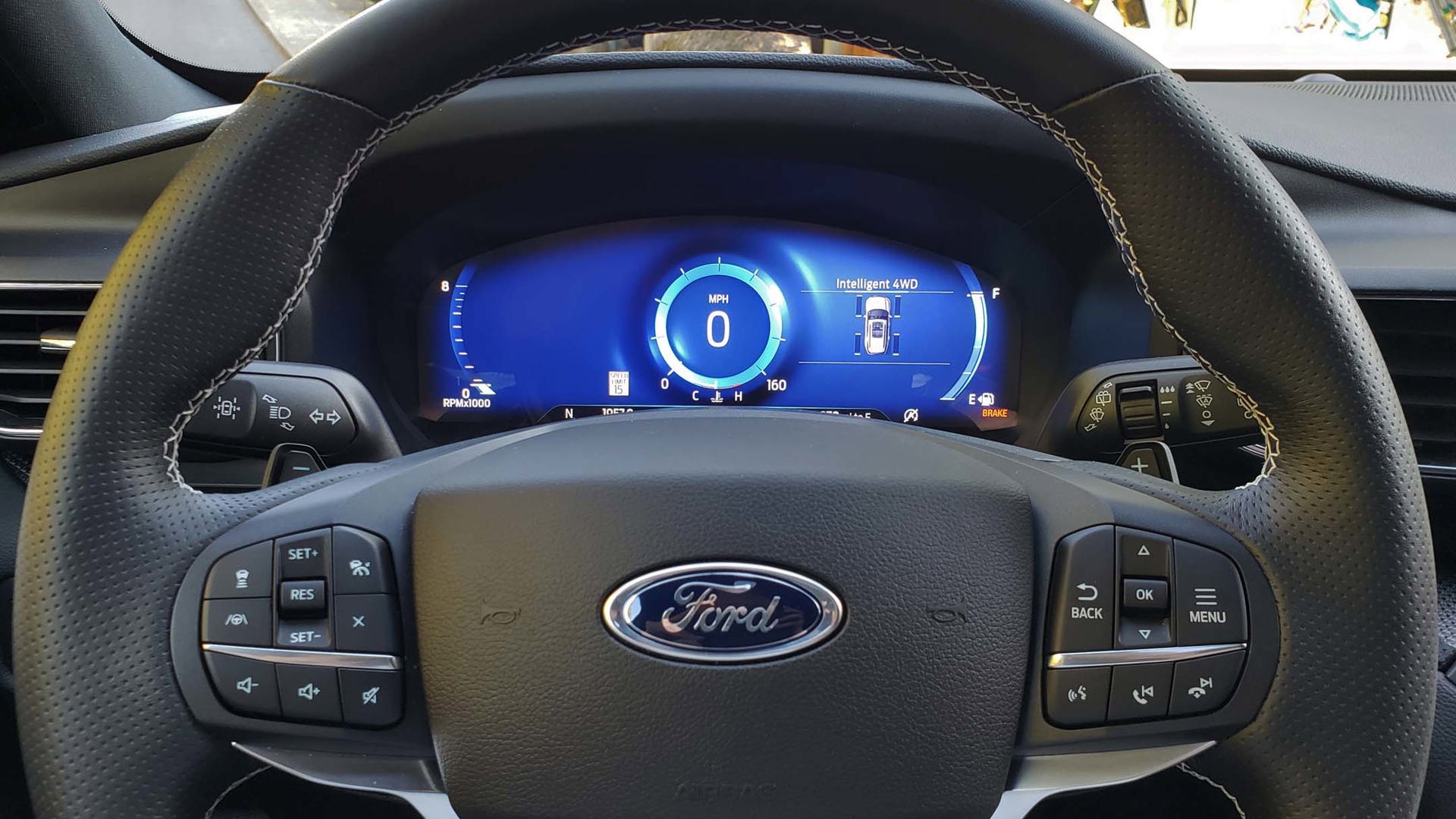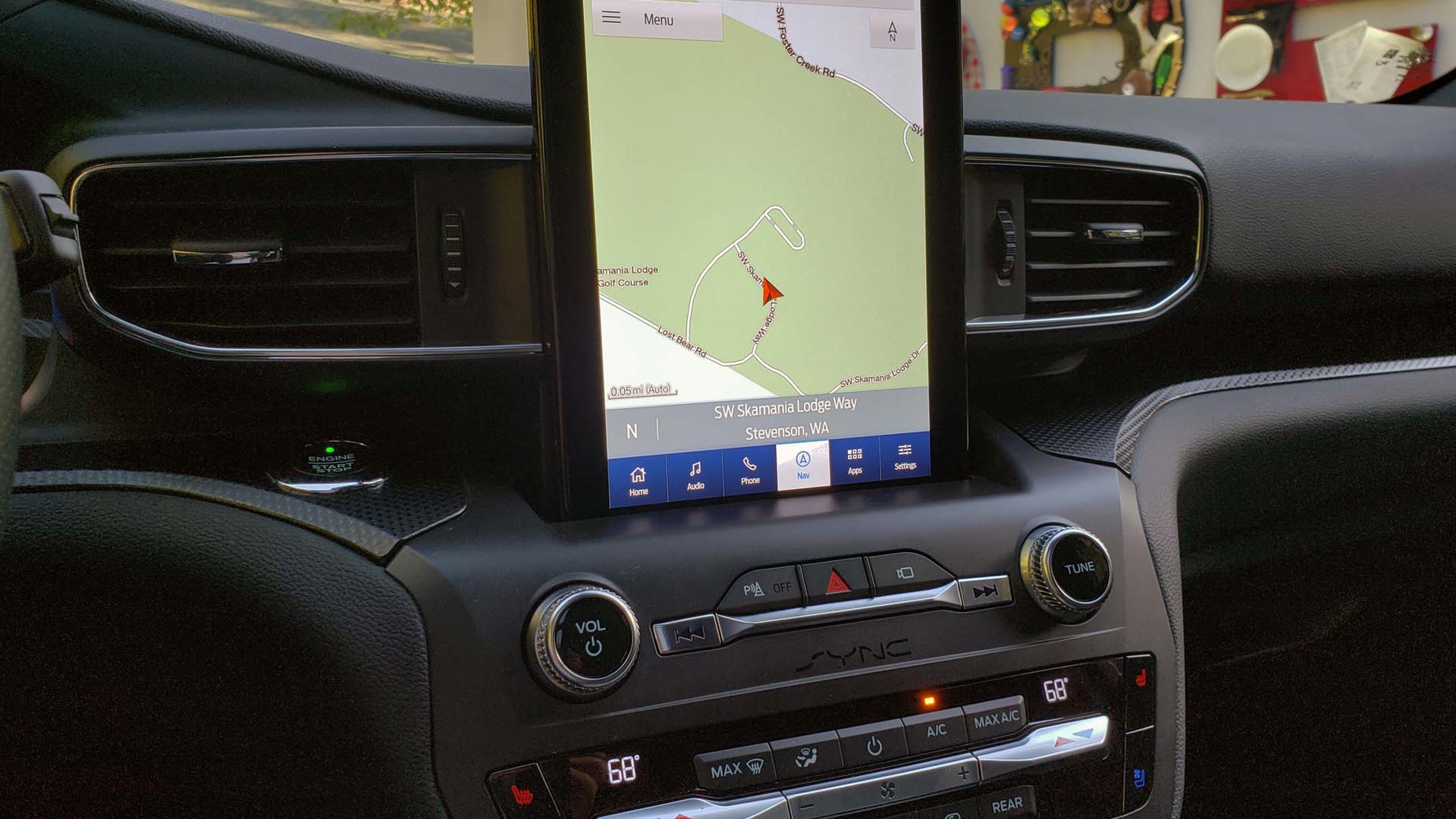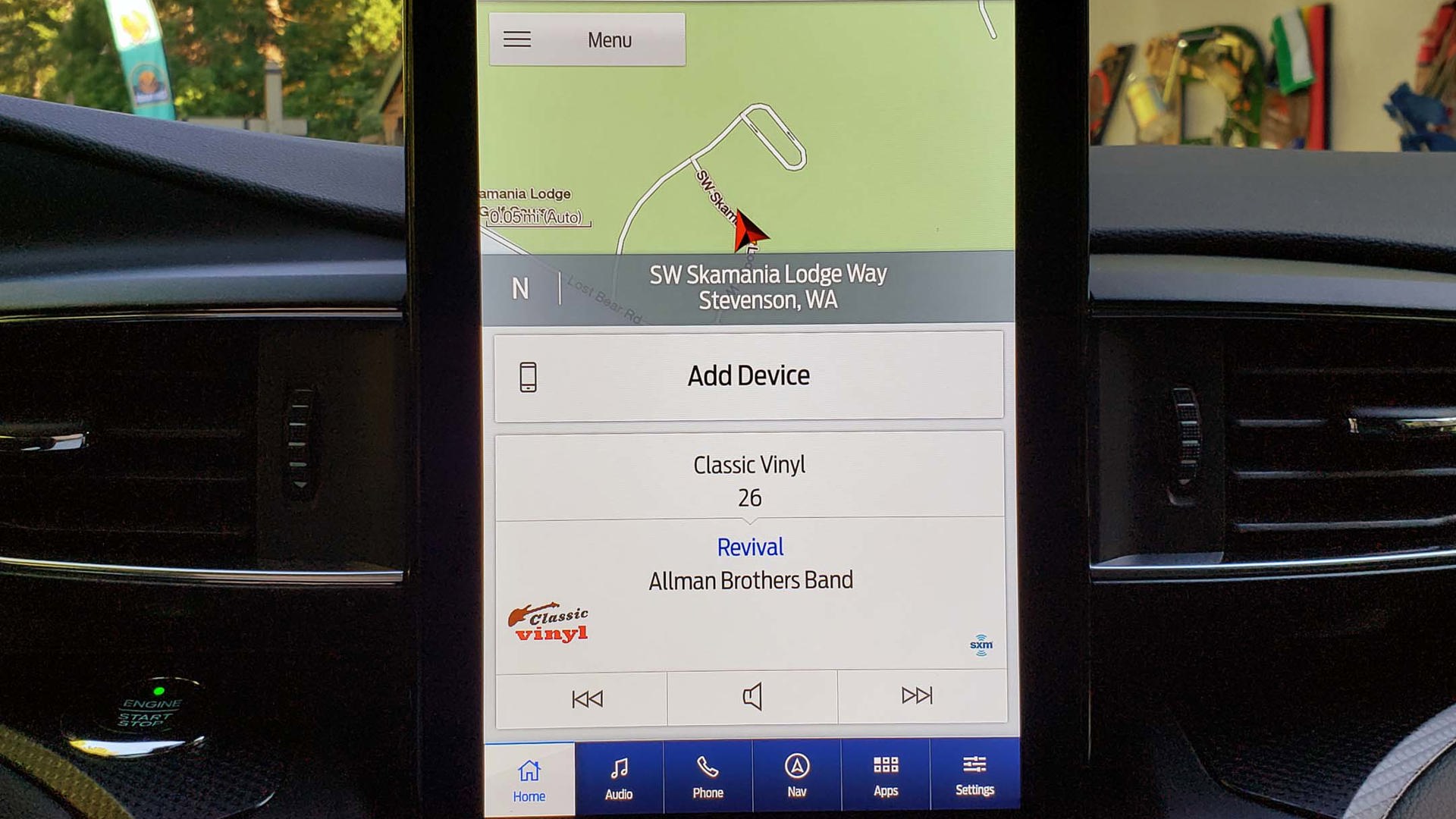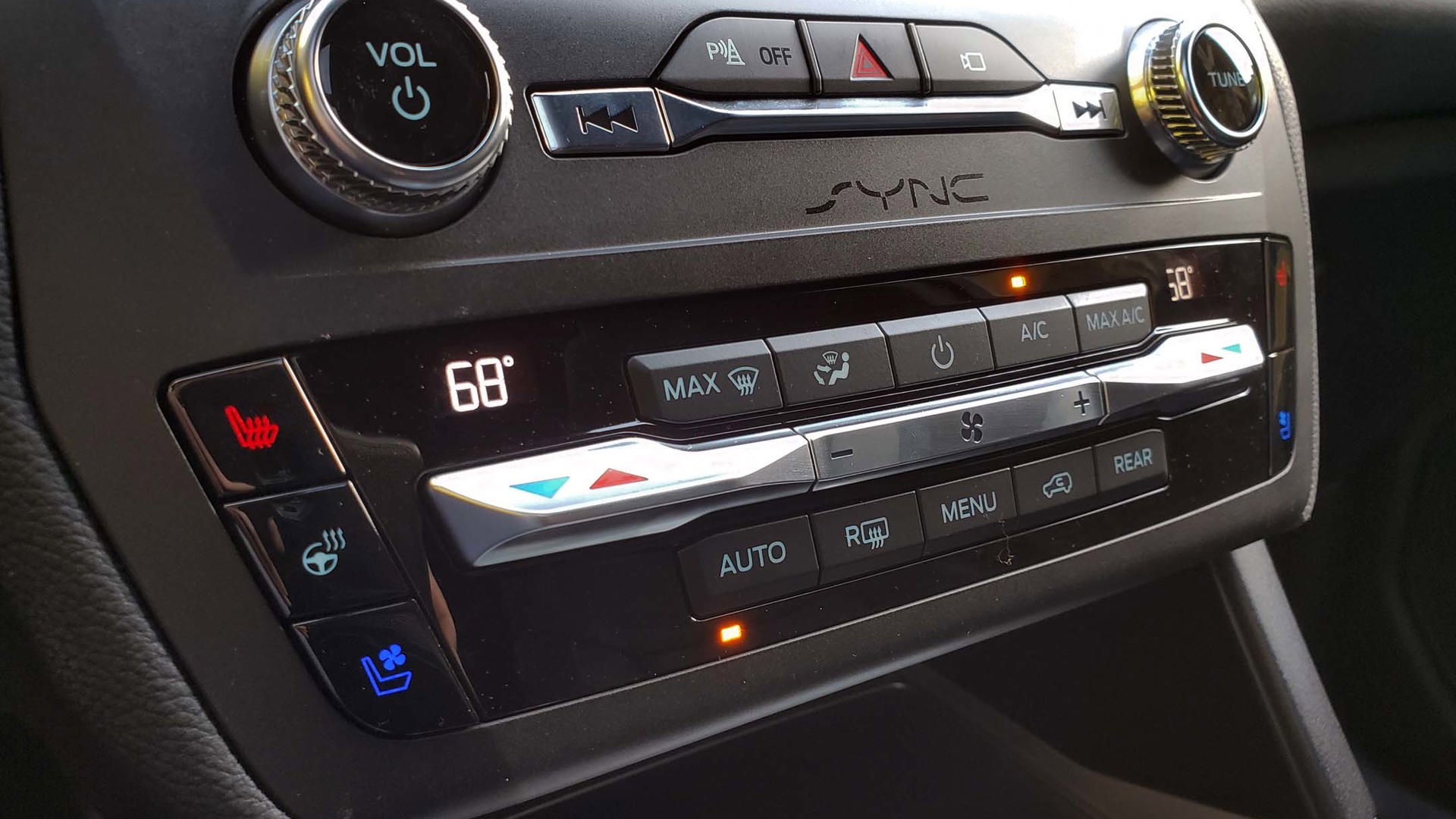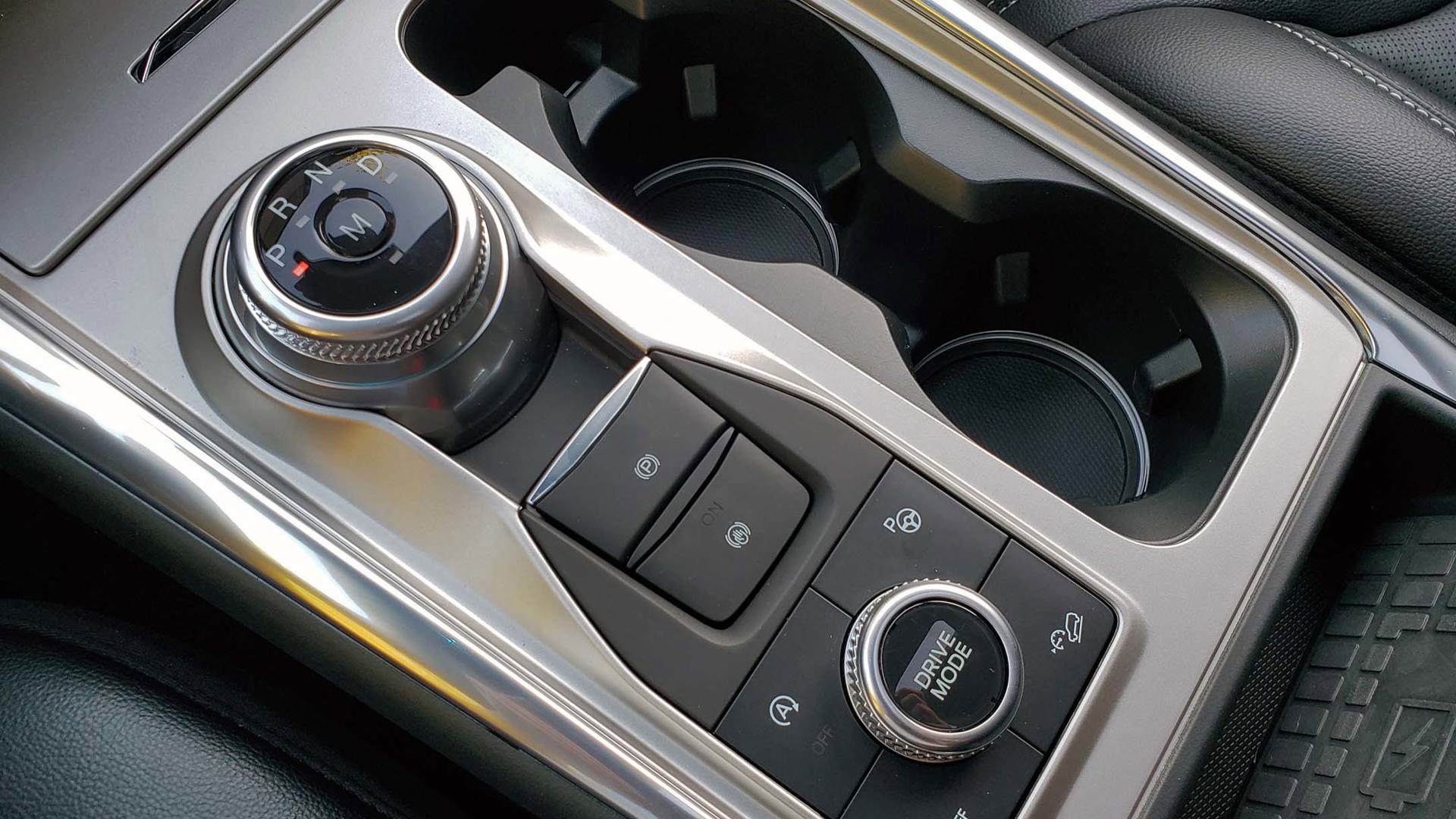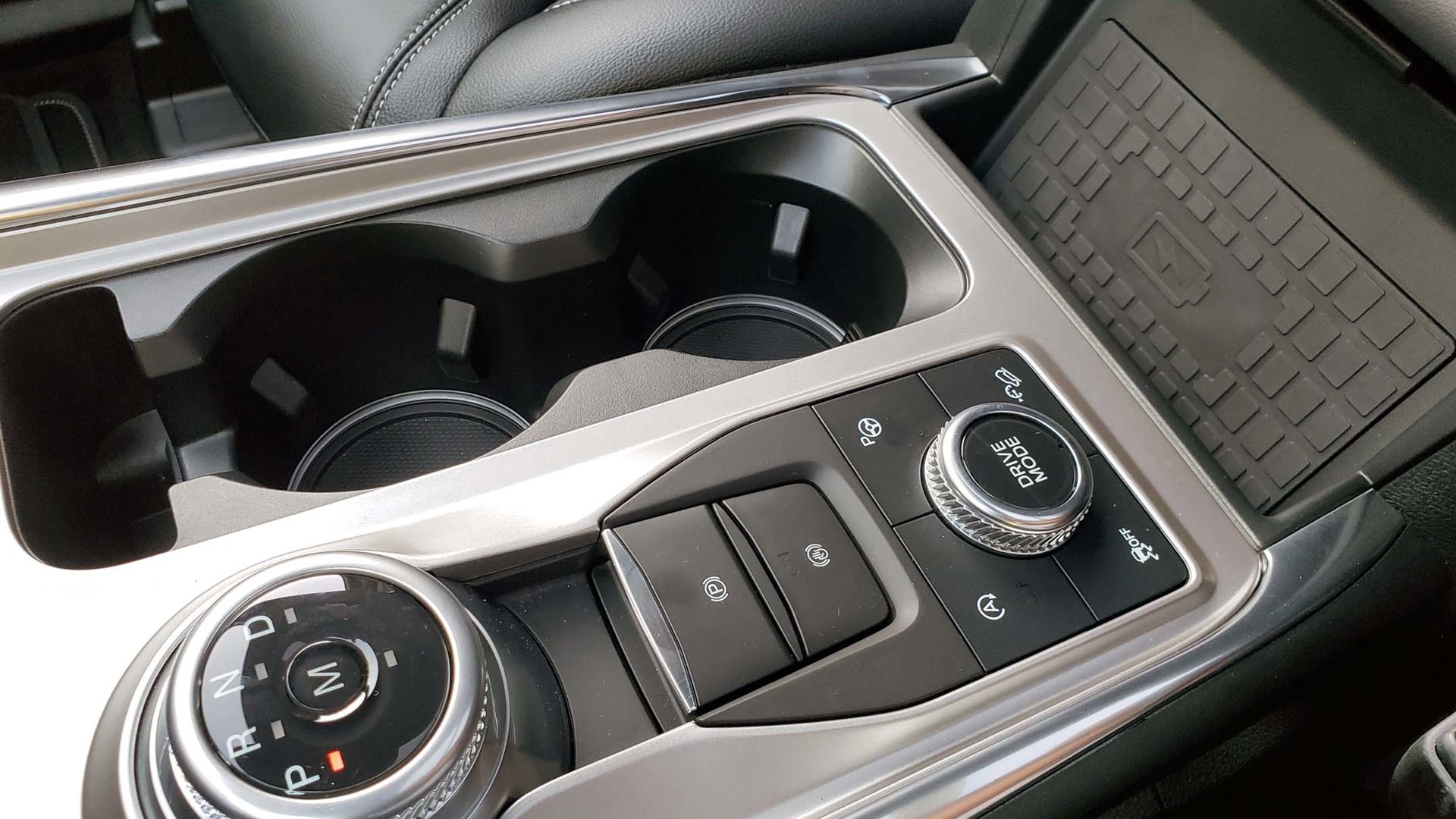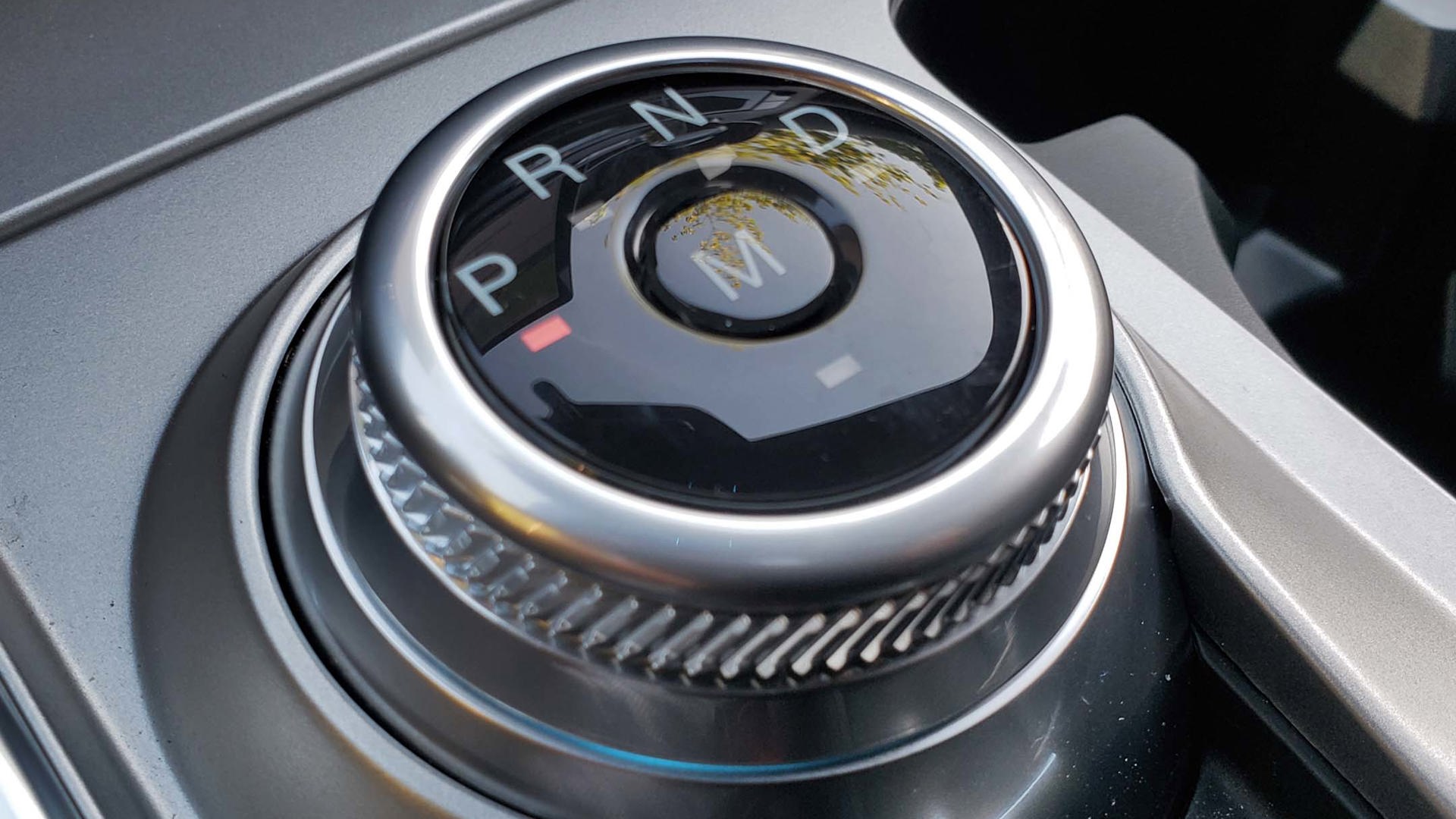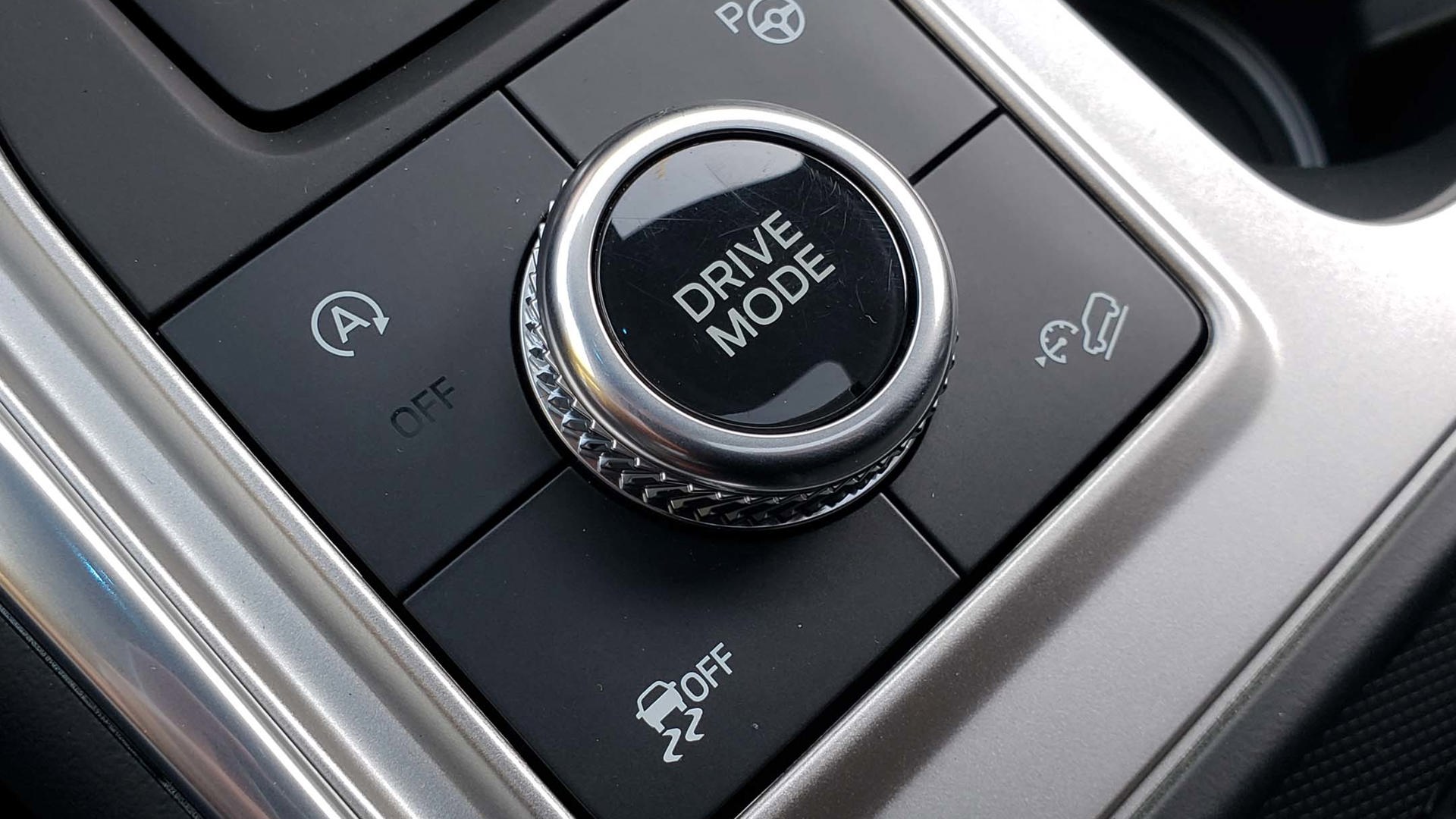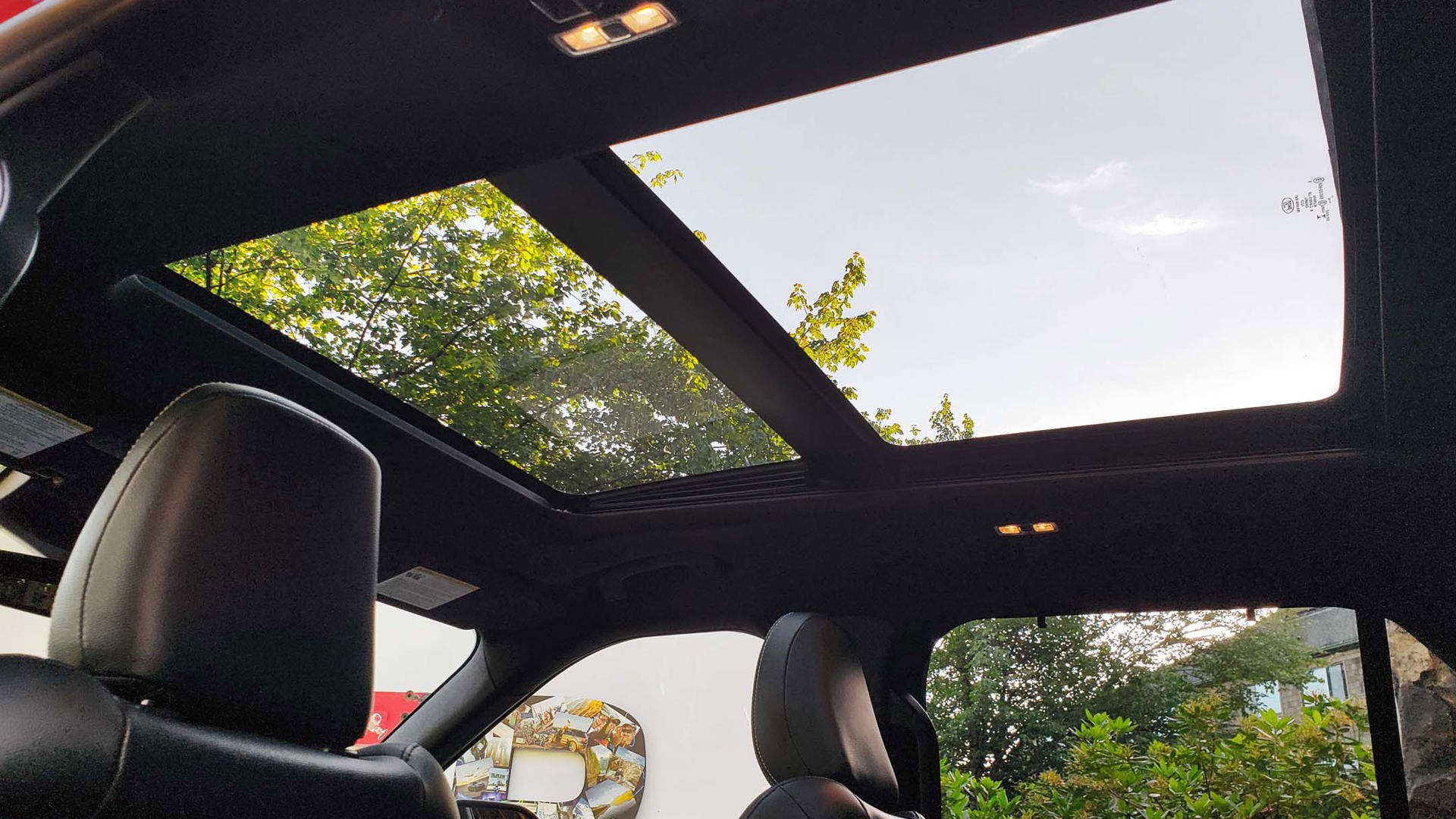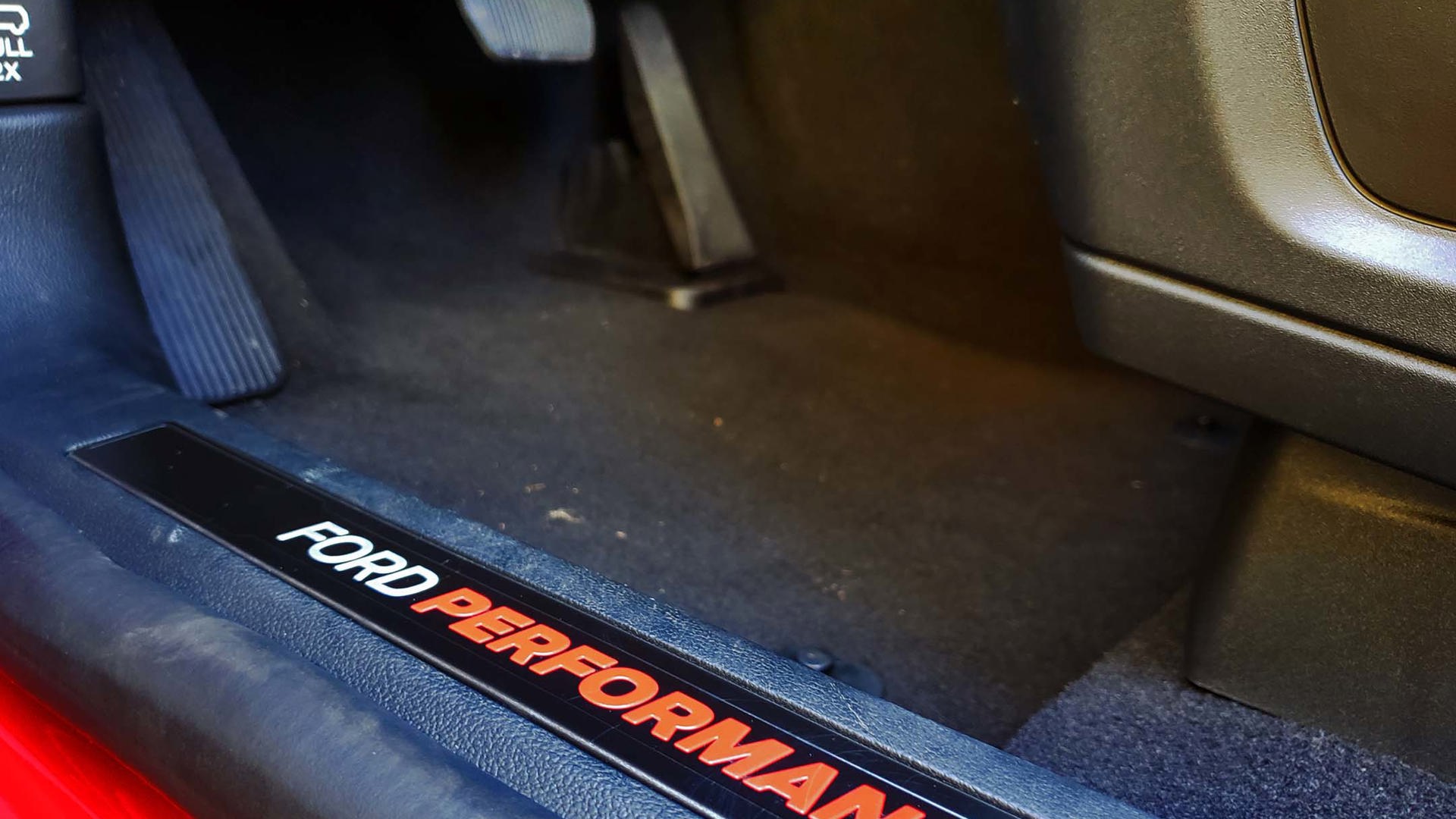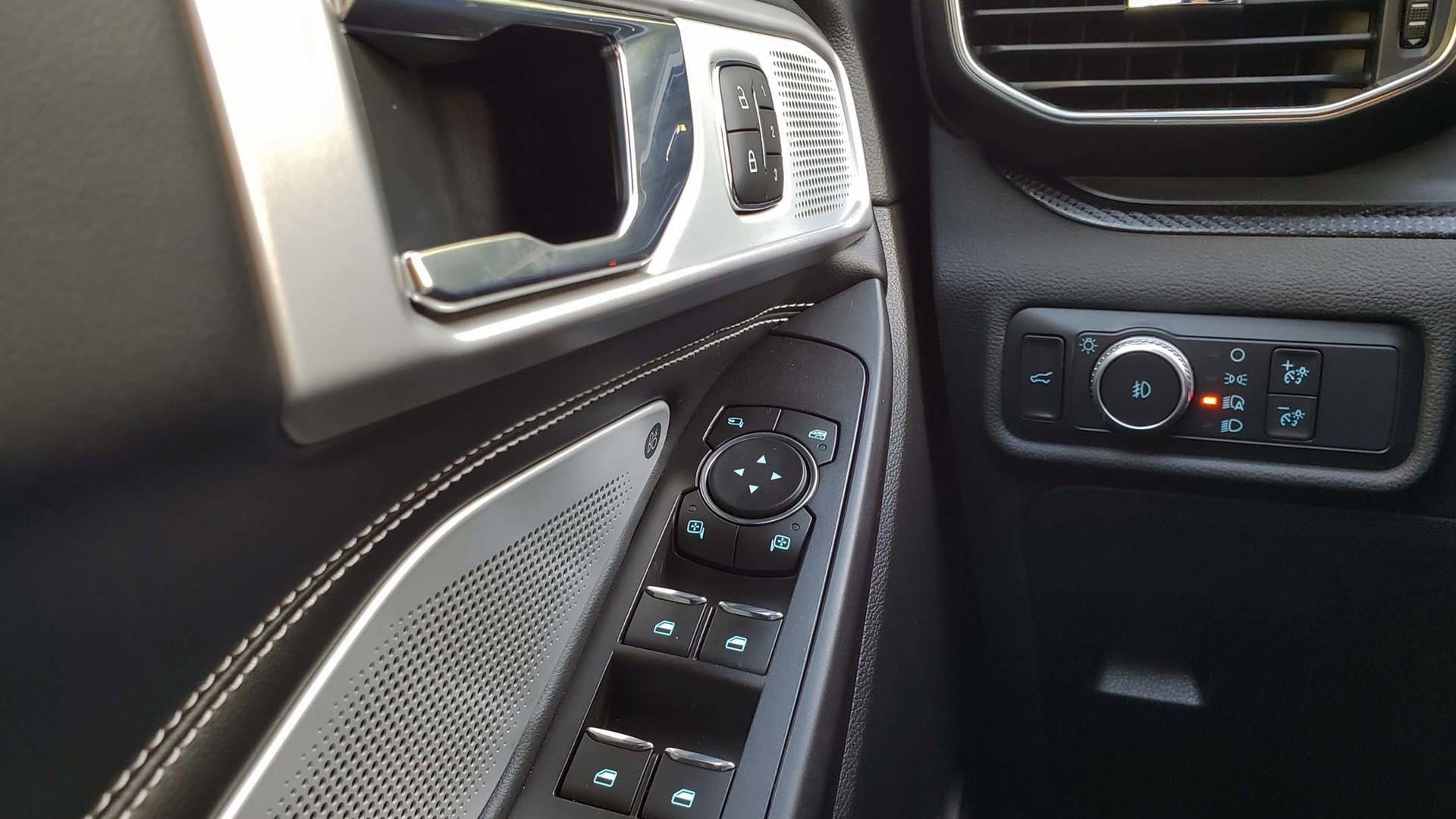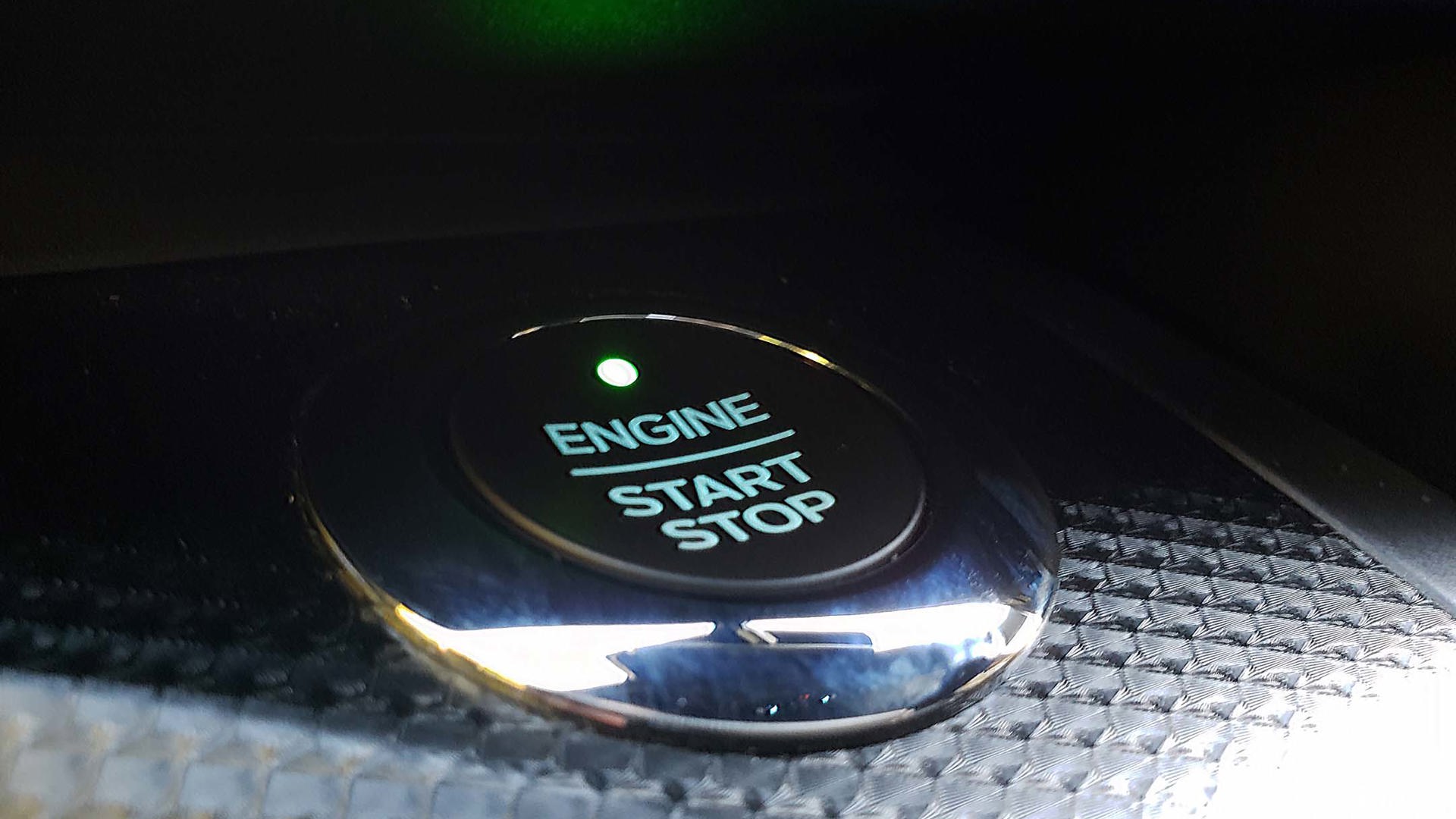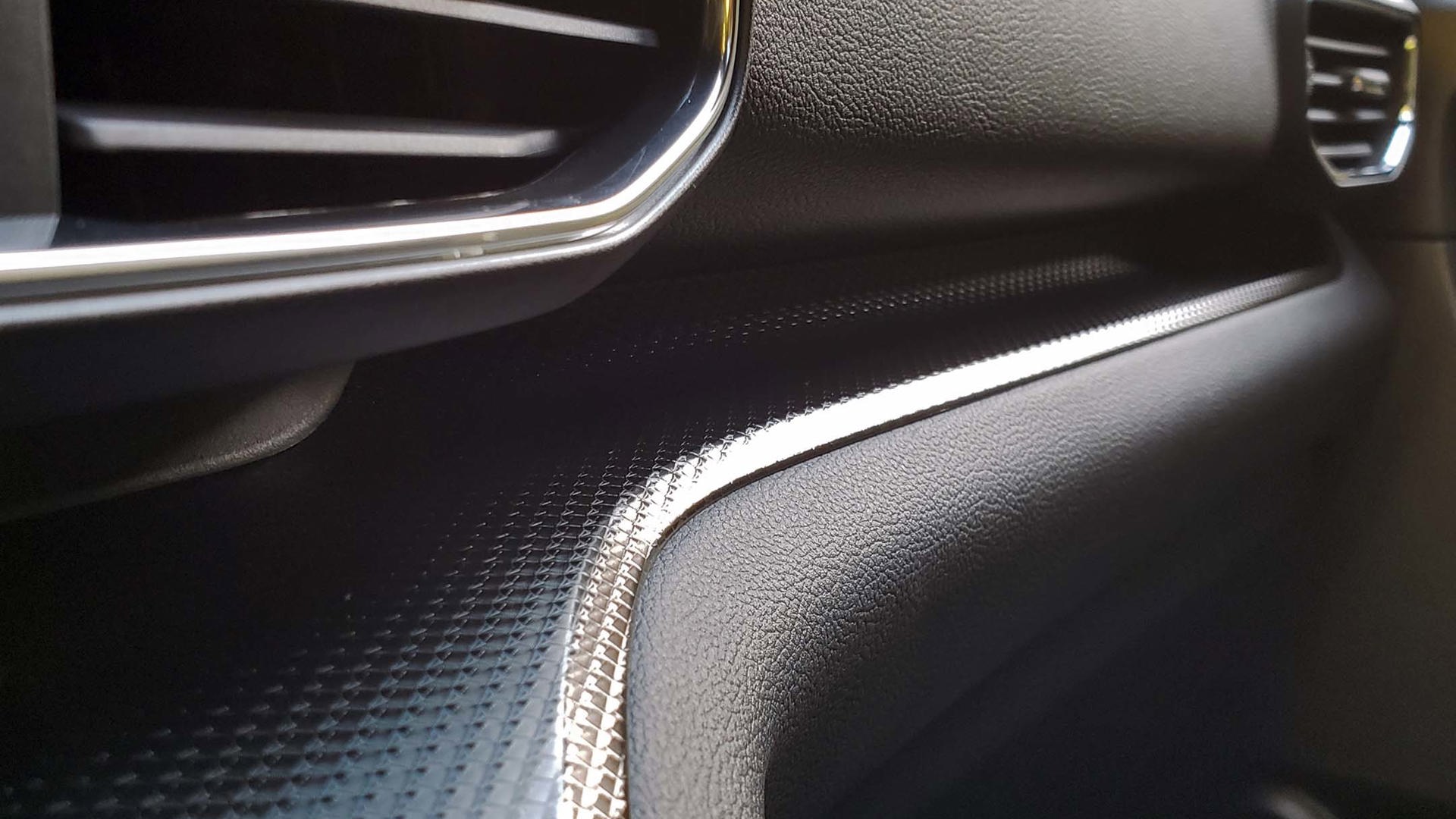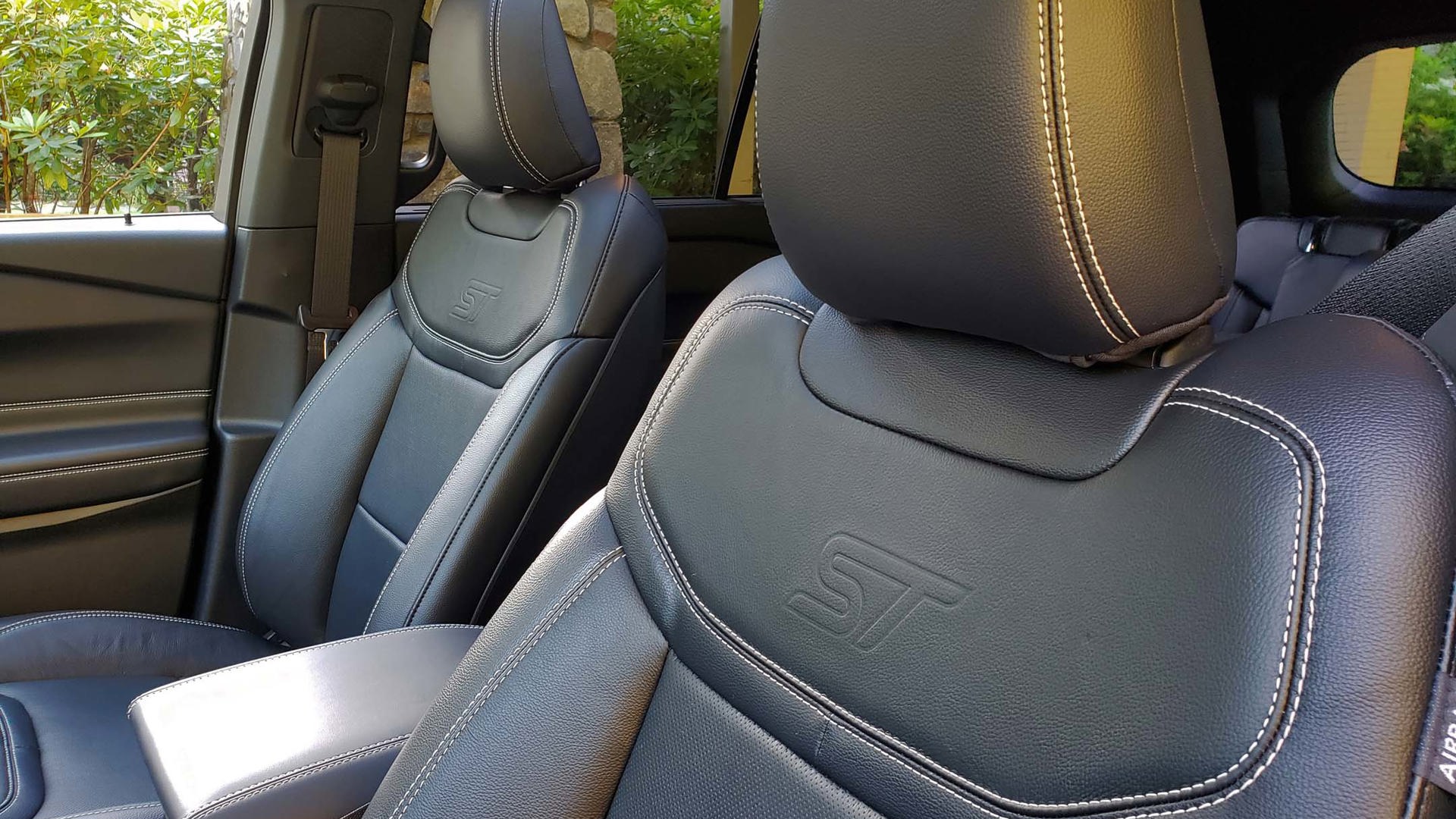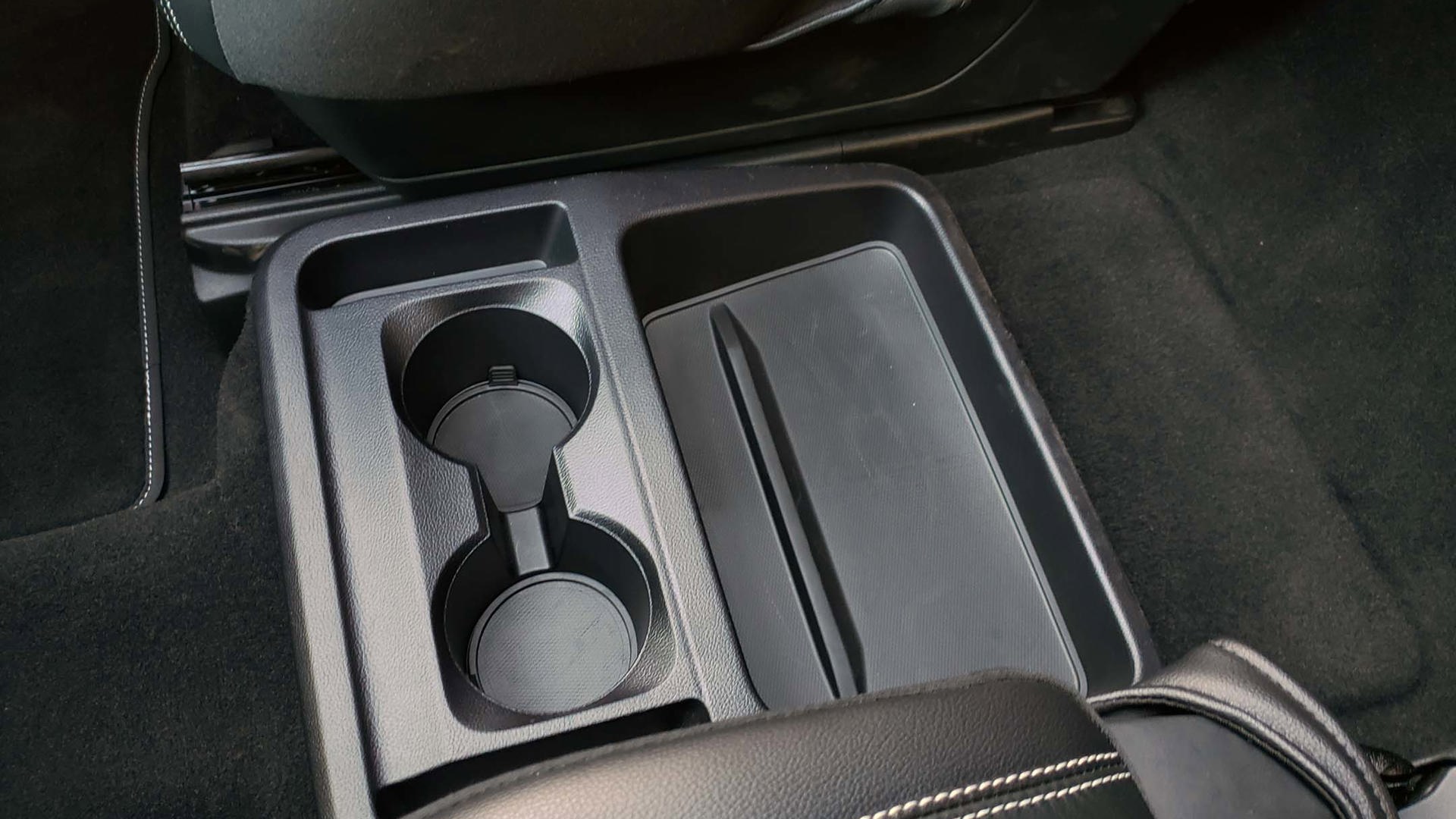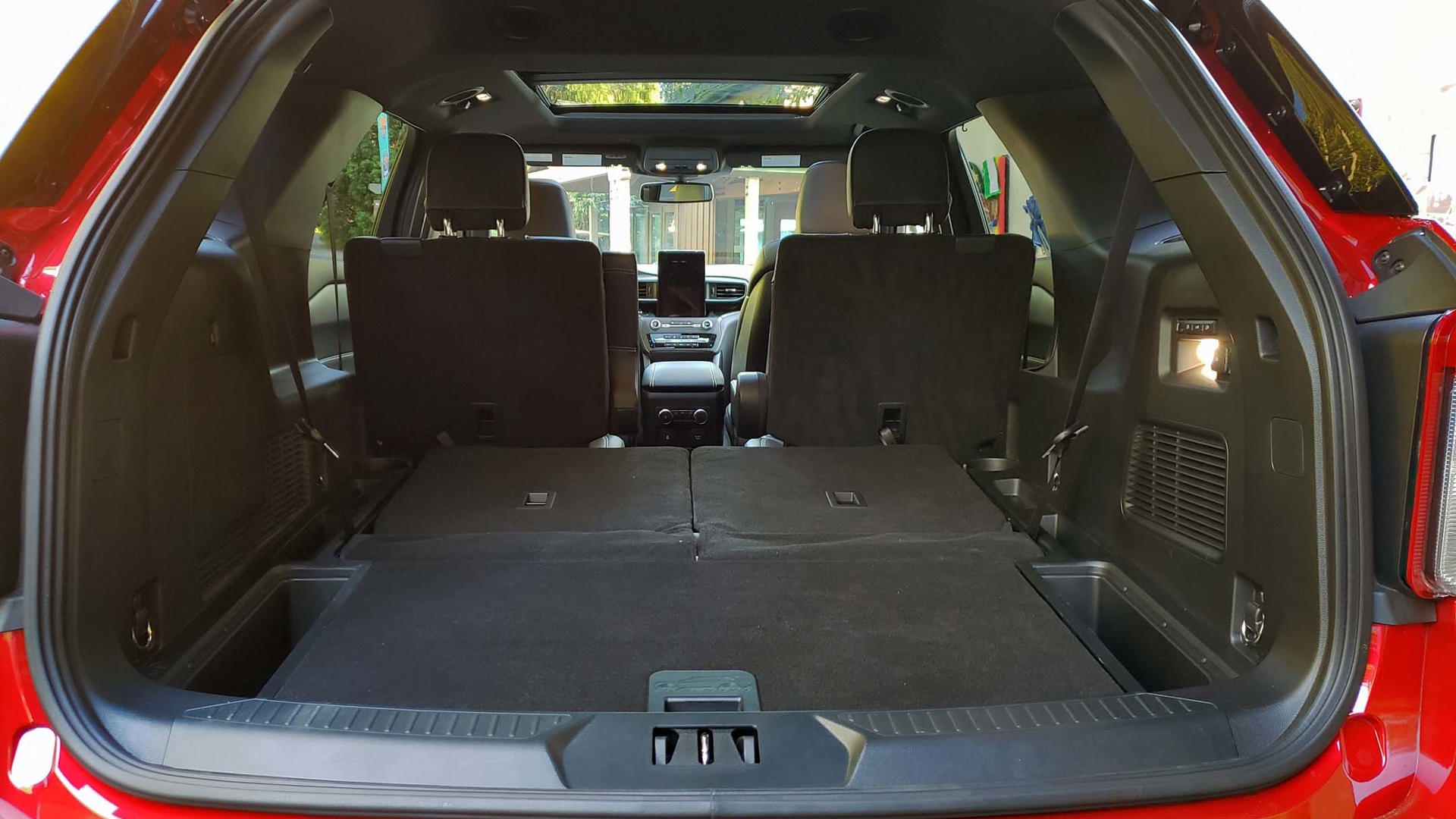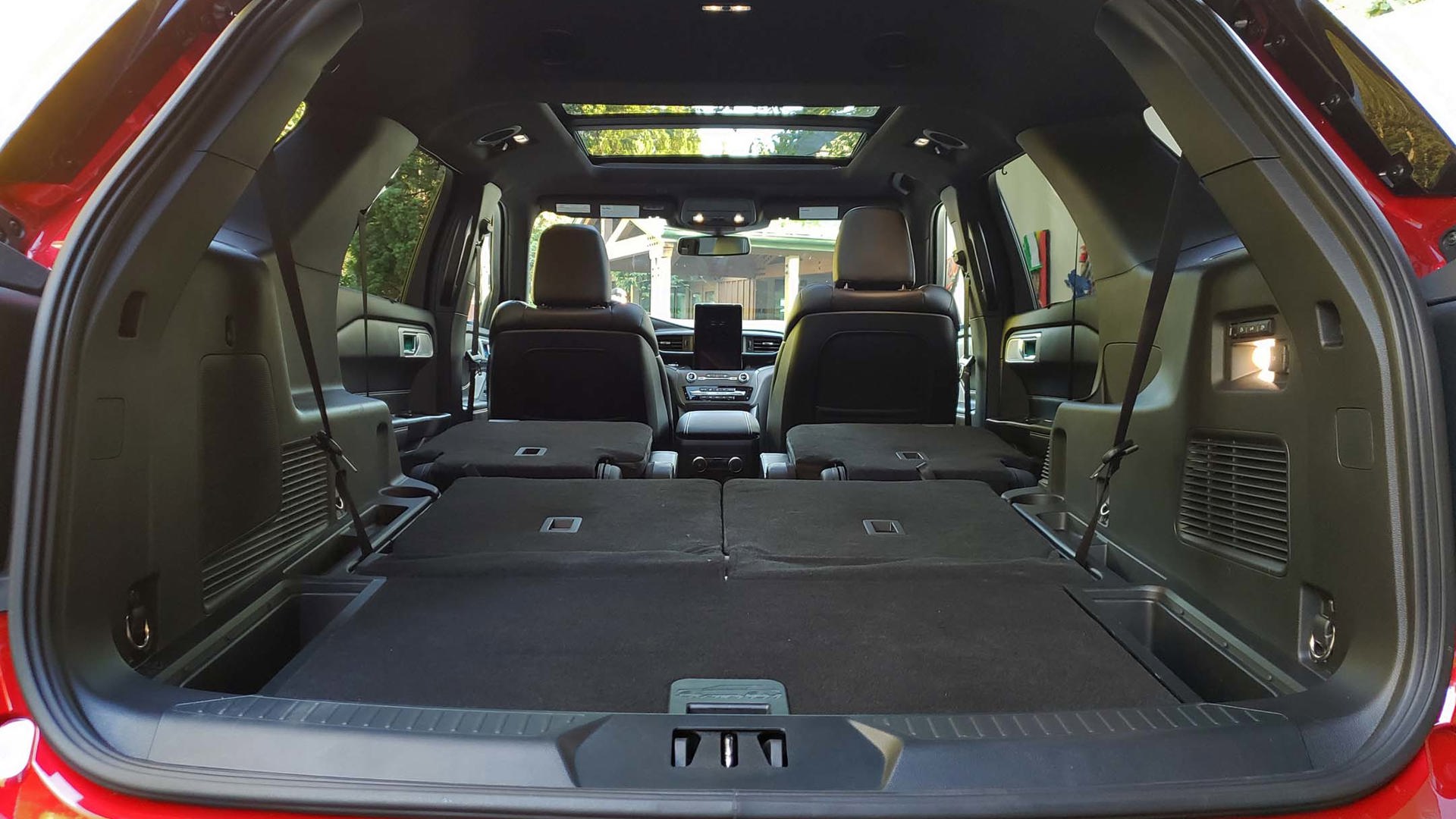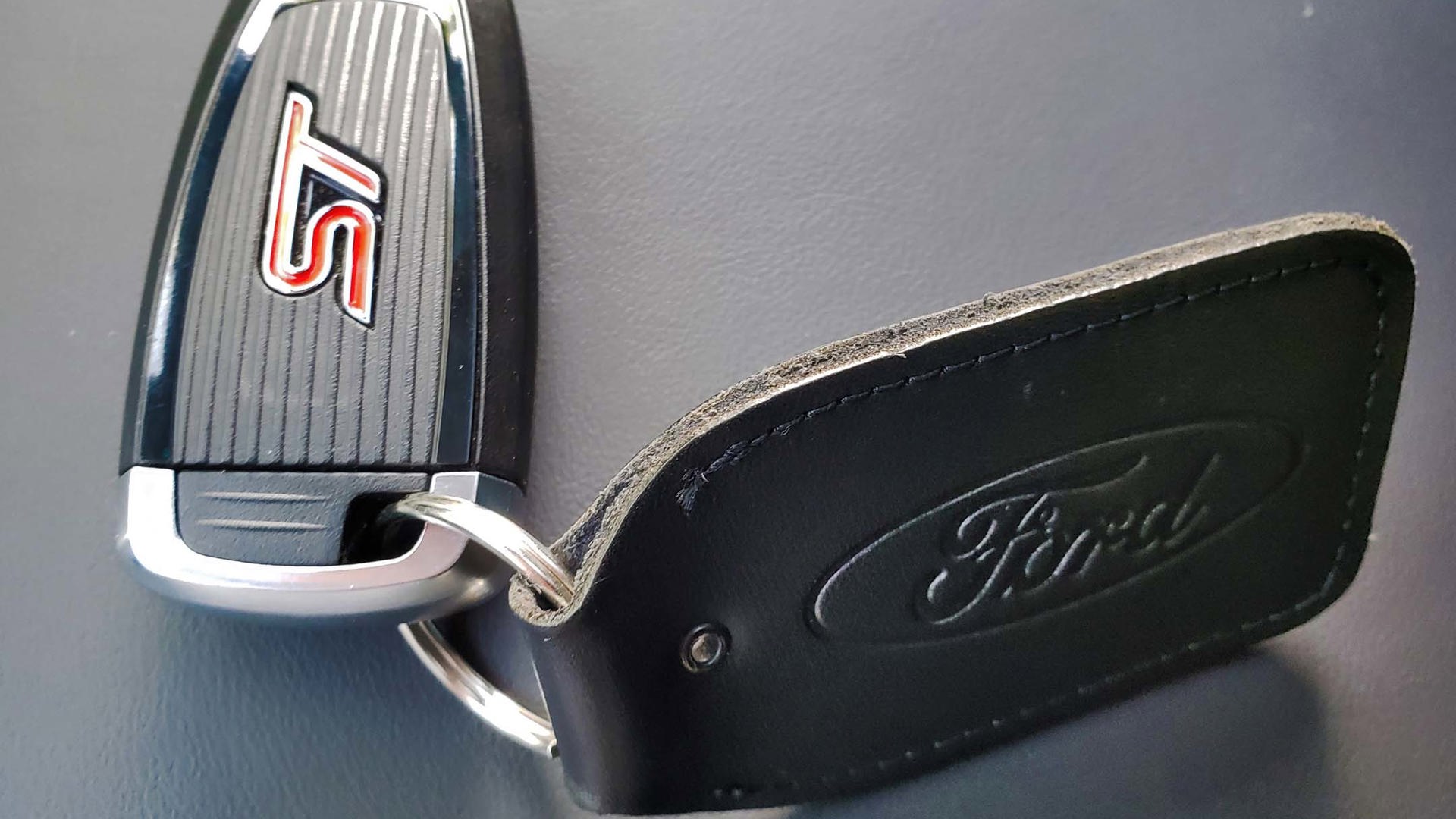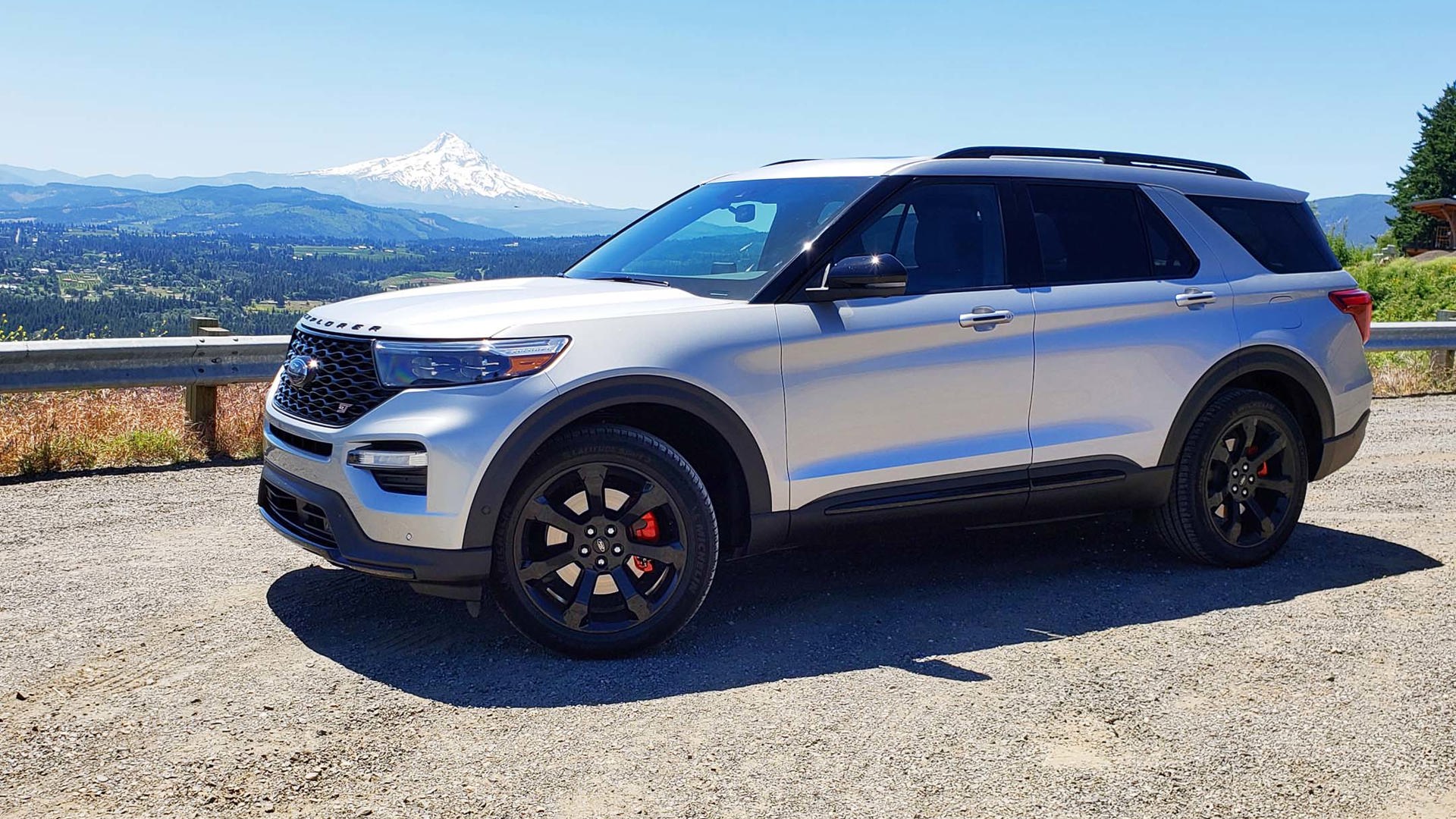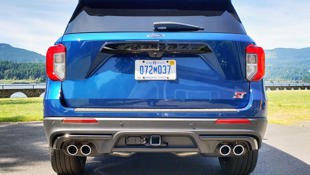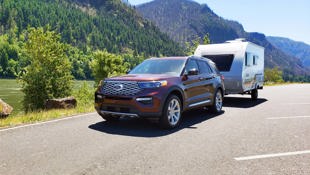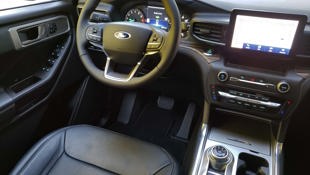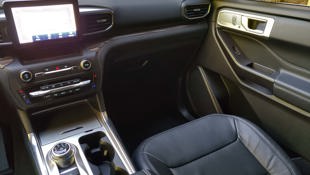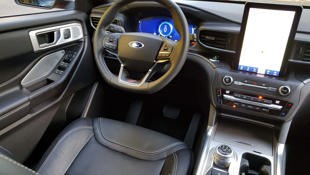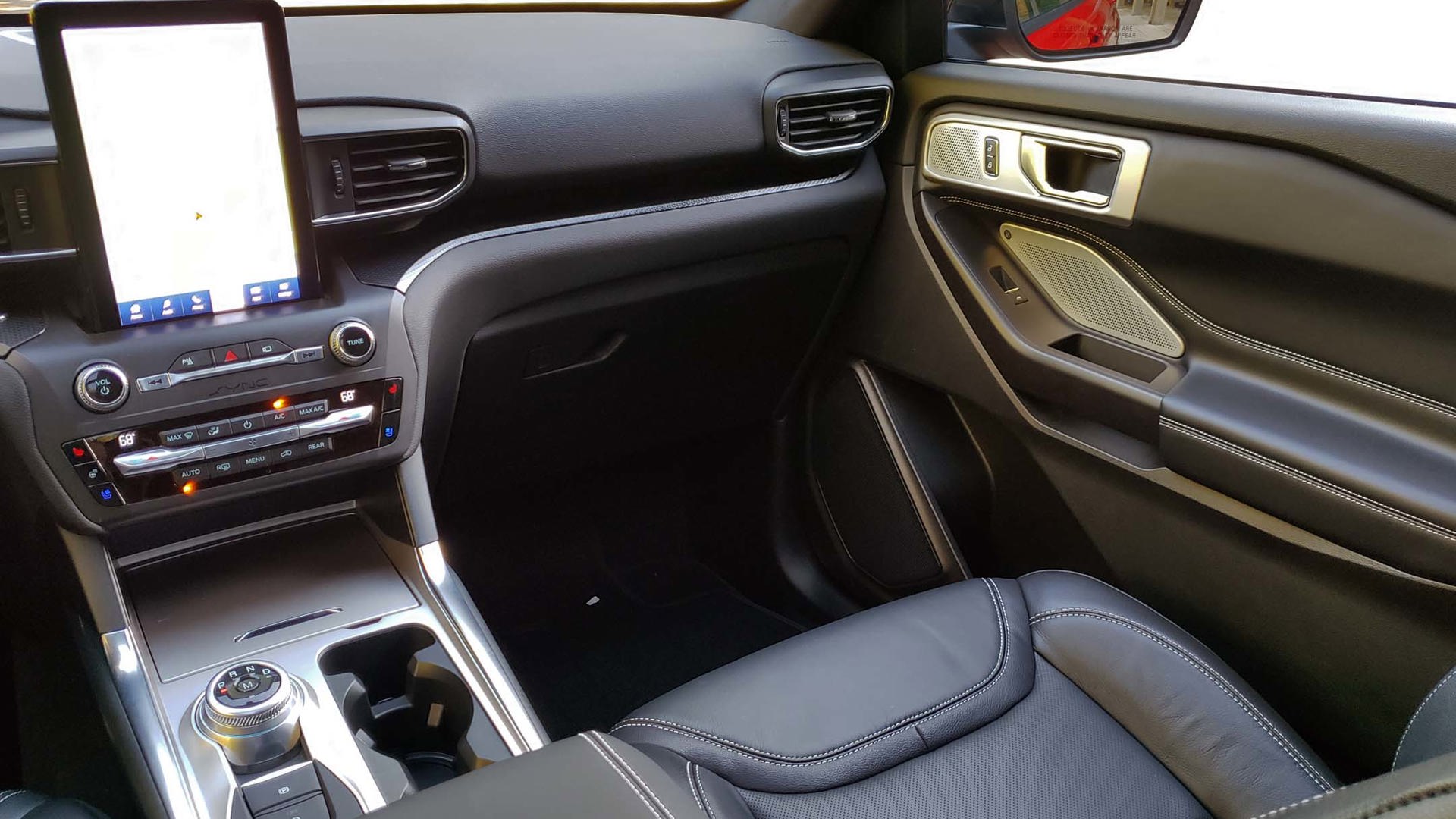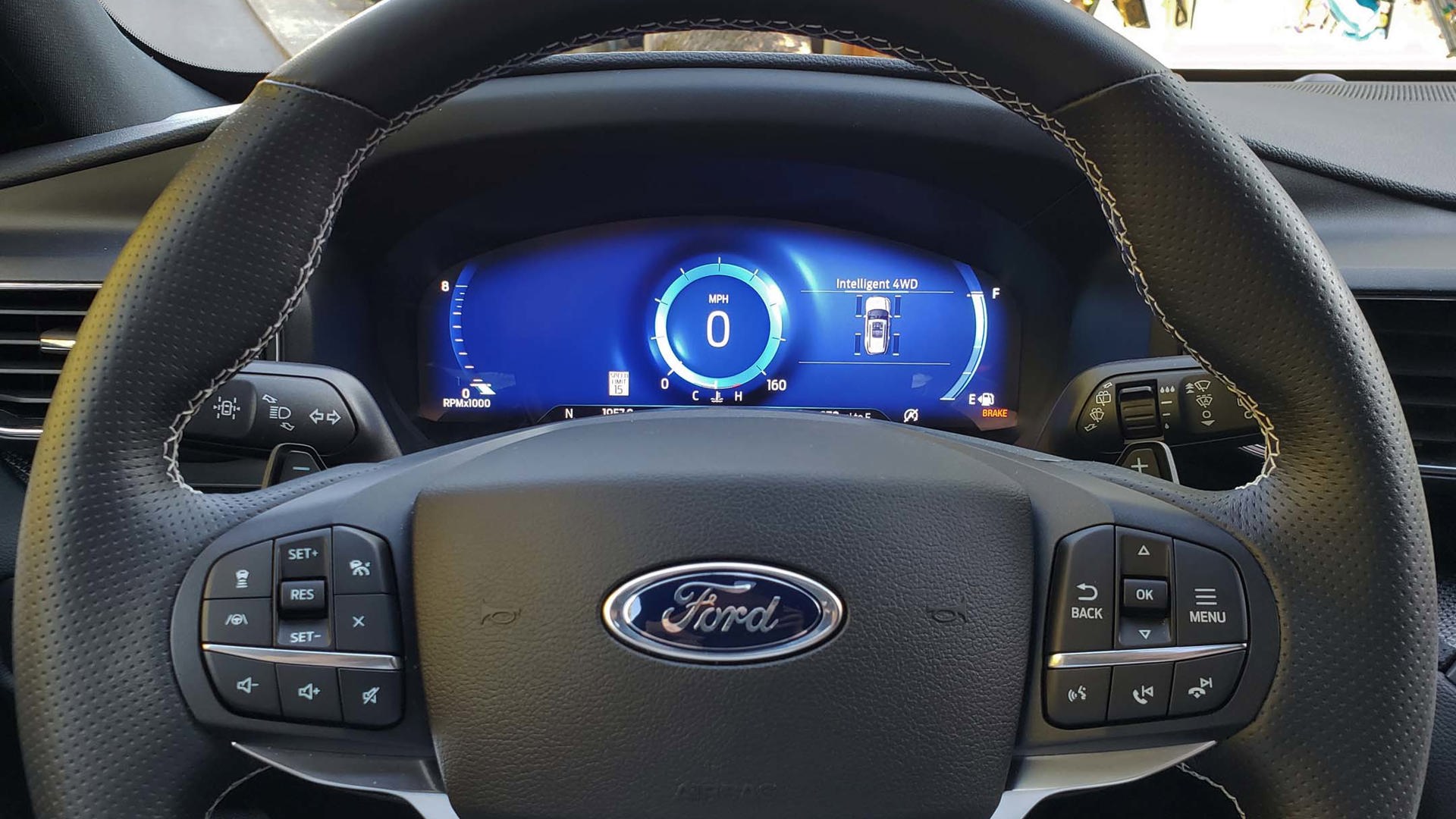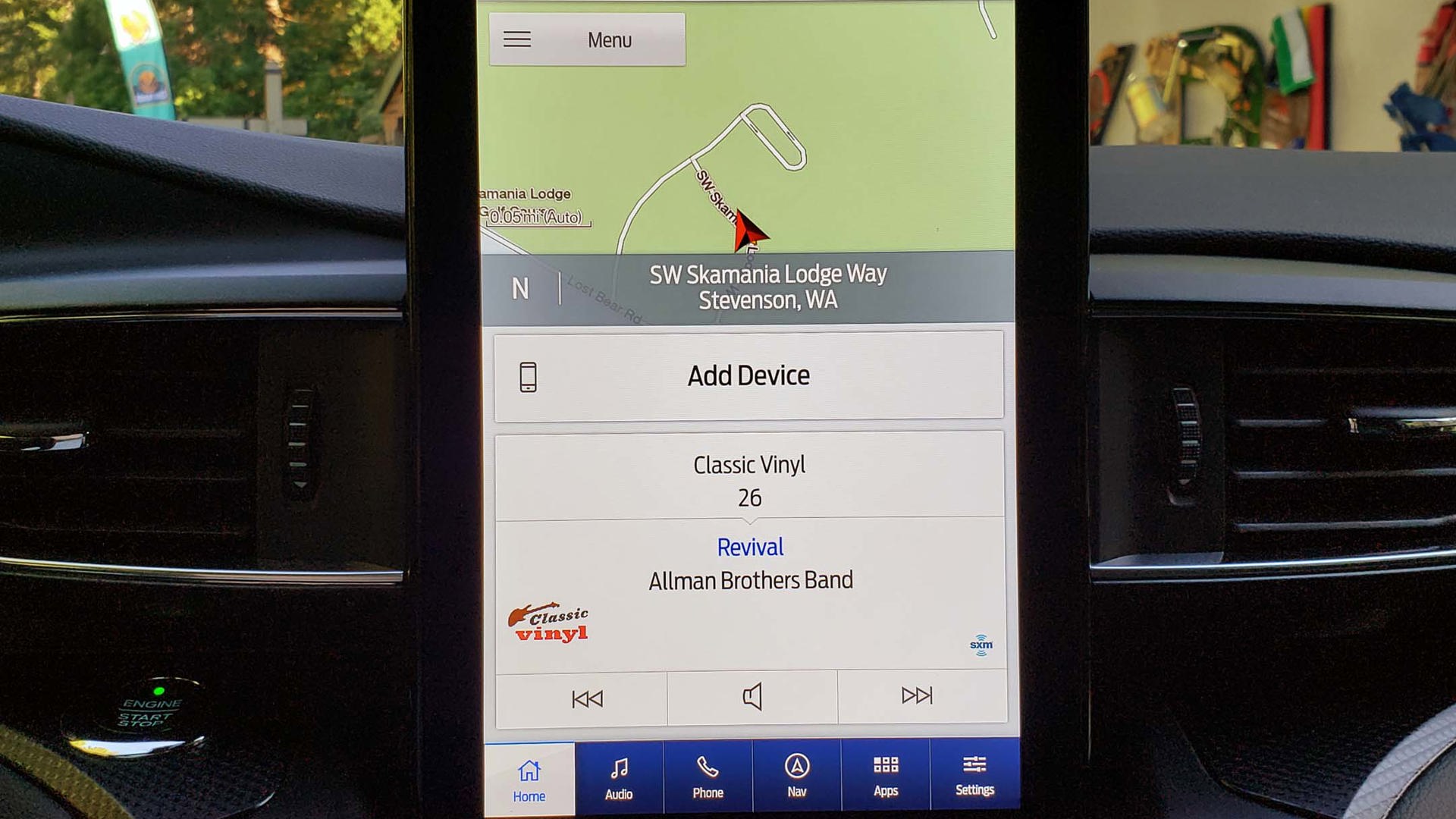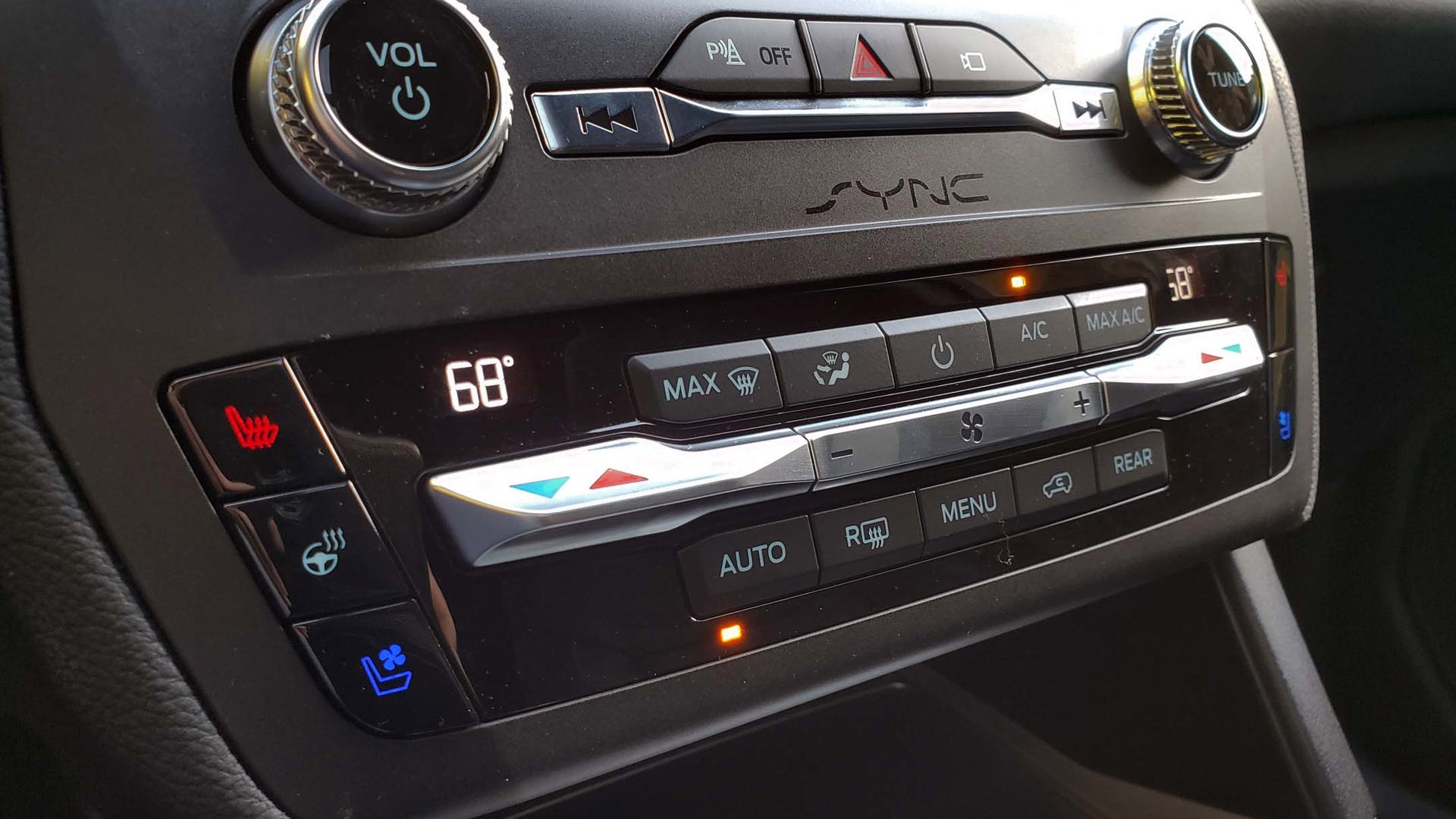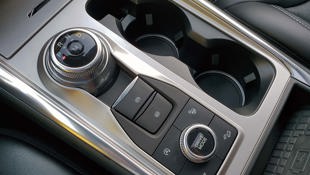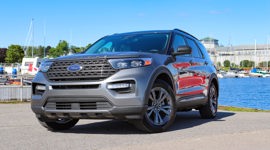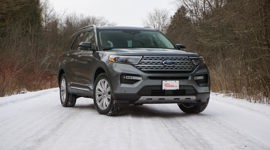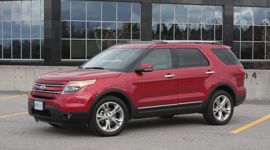Updated June 20, 2019: Added Explorer ST driving impressions, see "An Explorer ST? Yes Really".
The start of a sixth generation of storytelling, of adventuring and exploring, culminates in this: a return to roots, a lineup with unprecedented diversity to choose from, and a backstory that could significantly impact the initial impression that the 2020 Ford Explorer leaves with Canadians.
Giving the people what they want.
So, what’s the big deal, exactly? After spending eight years as a front-wheel-drive crossover, the new 2020 Explorer is being rebuilt from the ground up on a purpose-built rear-wheel-drive architecture. This has allowed the designers and engineers to work all kinds of great stuff into it, such as a lower centre of gravity for improved stability, and better front-to-rear weight distribution. The result really does drive superbly. It’s as well-handling a seven-seat SUV as I’ve encountered.
The problem, though, is that rear-wheel drive carries a bad rap in Canada for being difficult to handle in the snow, which for the vast majority of us fully contradicts the reason SUVs have become so popular here, and completely defeats the purpose of buying one. Ford Canada knows this, and so there won’t be any rear-wheel-drive models offered here. It’s a savvy move, but the consequence of it is that the cheapest 2020 Explorer you can buy, the XLT, starts at $45,199 plus $1,850 in destination charges and A/C fees, for a total of $47,149. Almost $50,000, and you haven’t even started optioning yet? That’s hardly a frugal people-mover. If budget is what you were hoping to find here, then you can move on.
But if you’re already shopping in this price range and you’re wondering what a new Explorer might do for you, wait a moment for the sticker shock to dissipate and then dig in. There’s quite a lot on offer here for those willing and able to invest in it.
Looks Are More Evolution than Revolution
It’s cliché, but here it fits: although there are plenty of major changes under the surface, the ones that meet the eye are more subtle. The new front end, moulded around the rounded grille with more prominent headlamps and Explorer lettering on the hood, is perhaps the most obvious. But the deeply stamped shoulder lines and angular tailgate with ultra-bright LED taillamps do the most legwork in modernizing its overall look.
And the interior? Well, it’s still a lot of black. But many of the surfaces that front-row passengers would interact with most often are now higher-quality, softer-touch materials; and while the inlays clearly remain man-made, their application is classy and understated.
Both the second- and third-row seats are spacious and easy to move around and reconfigure, and they fold nicely flat for that promised 4-by-8-foot space in cargo storage.
Multiple Powertrain Configurations
There are two gas-powered engines available here in three tuning configurations, all of which come with various 10-speed automatic transmission setups.
The entry-level 2.3-litre turbocharged four-cylinder produces 300 hp and 310 lb-ft of torque, which feels like it would be plenty stout for most drivers and offers 5,300 lb of towing when properly equipped. Fuel economy numbers log at 11.6 L/100 km in the city, 8.7 on the highway, and 10.3 combined.
The larger 3.0-litre twin-turbo V6 that comes standard in the Platinum delivers figures of 365 hp and 380 lb-ft of torque, Ford says, but those figures are for 93-octane gasoline. Still, this engine delivers effortless acceleration and exceptionally smooth power delivery that makes it a joy to drive. The maximum towing amount goes up to 5,600 lb, and fuel economy comes up as 13.3 L/100 km in the city, 9.8 highway, and 11.8 combined.
Available on the Limited model only is a hybrid powertrain, a 3.3-litre naturally aspirated V6 combined with a hybrid system that’s good for a combined output of 318 hp. With gentle throttle application, this powertrain will run the Explorer until roughly 55 km/h on electric power while also being capable of some not-so-mild off-roading as well as some towing – some of us pulled a boat with one, so it will clearly do it, but given how much more confident the standalone V6 felt doing the same task, I’d spend the extra money on it if I expected to tow often. I heard some colleagues say that the transitions between the gas and electric motors aren’t very smooth; while there’s definitely a discernable shift between them, I don’t find it to be so distracting as to be problematic.
An Explorer ST? Yes, Really
The Explorer ST gets that same V6 tuned to produce 400 horsepower and 415 lb-ft of torque while also benefiting from unique suspension springs and shock tuning, sway bars, and a 10-speed transmission lifted from the Mustang GT.
When I arrived for this event, I joined some colleagues for lunch who were discussing this car and the general idea of a seven-seat SUV as a performance vehicle. I interjected quickly and quite rudely, “Come on – an Explorer ST? Really? Who on Earth needs one of these?”
After driving it, I stand by my original assertion: no one will ever need one. But my mind is changed on how many people are likely to want it: a lot, because this thing drives ridiculously well.
Yes, it’s more than $60,000 – and a fair bit more once equipped with the street pack or the performance pack. And the changes in character that come with this version are not as dramatic as they are on some other large high-performance SUVs like, for example, the Jeep Grand Cherokee Trackhawk with its 200-plus horsepower jump and price tag of more than six digits.
What the Explorer ST offers over the standard models is an incremental yet approachable increase in performance, which is what the engineers say they were going for. They didn’t want to alienate people who might have chosen the Sport model on the previous generation, just give them something that’s an extra notch or two above the norm. On that, they’ve delivered. Its ride character stabilizes and flattens out considerably, power delivery is more energetic without being less smooth or more shocking, and it’s hotter-looking in all of the right places.
It could perhaps benefit from some features like the adaptive suspension that’s offered on more expensive performance-oriented crossovers, but on the other hand, that’s why they’re more expensive. I wouldn’t say that the handling characteristics make me want to fling this through a winding road like I would a two-door coupe, but I also don’t think that’s what anyone would expect of an ST-badged SUV of this size. It’s just standout enough to merit its price tag, just as it should be.
My prediction? Ford’s going to be filling a lot of orders.
Nice Advancements in Technology
The area that progresses by the most leaps and bounds is technology. Here, the infotainment system comes in two flavours: a smaller version in the XLT, Limited, and Hybrid models, and a larger, 10.1-inch portrait-oriented screen found standard in Platinum and optional in ST models that can be split to show multiple functions at once such as navigation and radio and allows for mixing of presets between sources such as satellite and AM/FM radio. Truth be told, it’s highly reminiscent of the premium screen found in the Ram 1500. But that product hasn’t made its way into FCA’s SUVs yet, so in this space Ford has a unique offering on its hands, for the moment at least. Some people will complain that it looks like a tablet screen wedged onto the dashboard; I say Ford knows full well and is just giving the people what they want. The main line of digital buttons along the bottom could be a little larger and easier to use, but otherwise I find it to be an excellent addition.
The Platinum and ST models also offer an attractive new 12.3-inch digital instrument cluster that comes with a fun little Easter egg: when cruise control is activated, the graphic that represents the lead car changes based on the drive mode you’re using. In normal mode, it’s a Fusion – an interesting choice seeing as how there will be increasingly fewer of those on the roads in the coming years – and in sport mode it’s a Mustang GT, while tow/haul mode displays an F-150. Sure, it’s a little gimmicky, but it’s fun.
A 4G LTE Wi-Fi hotspot for up to 10 devices can also be equipped; note that it requires a subscription as well.
Safety is Standard
Ford is also joining other automakers in naming a suite of safety and convenience technologies – in this case, it’s known as Co-Pilot360 – and making it standard equipment on a growing list of models, including the new Explorer: pre-collision assist with automatic emergency braking, including pedestrian detection, forward collision warning, and dynamic brake support; blind-spot information system with cross-traffic alert; lane-keeping; a rear-view camera with a built-in lens cleaner; and automatic headlamps with auto high-beams.
A Few Missing Details
It seems as though Ford has thought of almost everything, but there are a few details that would be nice to have: the third-row headrests are quite large when deployed and can’t be dropped remotely, which in combination with the rounded rear window can make rearward visibility somewhat limited. In the standard gauge cluster, at least in the US models, the speedometer is not set up for precision, with notches falling at 10-mile intervals; perhaps the kilometres-per-hour gauges will be different. And some buyers may wish they could squeeze one more passenger into the third row, but it’s limited at two, a move Ford says is deliberate to prioritize comfort over pure utility.
The Verdict
With the number of seven-seat SUVs on the market these days with starting prices under $40,000, seeing the next-generation Explorer land in Canada for no less than $45,000 is surprising. But it seems that more and more people are willing to spend to get into the vehicles they really want, so perhaps this won’t be as much of a detriment as it seems like it could be. Those with some budget to play with will find that the new Explorer has excellent drive dynamics and a selection of powertrains that, provided potential buyers are willing to spend, offers something to fit a wide variety of tastes.
All models of the 2020 Ford Explorer will begin arriving in Canadian dealerships at the end of this summer.
Pricing: 2020 Ford Explorer
Pricing below and includes freight and PDI of $1,850 plus $100 A/C tax.
Explorer XLT AWD: $47,149
Explorer Limited AWD: $54,149
Explorer Limited Hybrid AWD: $59,149
Explorer ST AWD: $61,049
Explorer Platinum AWD: $66,549
Packages
Cold weather package (XLT): $1,300 (first and second-row heated seats, heated steering wheel, and windshield wiper de-icer)
Co-Pilot 360 Plus (XLT): $1,000 (intelligent adaptive cruise control with stop-and-go, lane centring, and speed limit sign recognition; evasive steering assist, and voice-activated touchscreen navigation with pinch and zoom and Sirius XM)
Premium Technology Package (ST): $1,500 (front-row multi-contour seats with active motion, 10.1-inch LCD portrait touchscreen, B&O sound system with 14 speakers)
ST Street Pack: $1,500 (21-inch aluminum wheels, performance brakes, and red painted brake calipers)
ST Performance Pack: Pricing and package items TBD, late delivery
Class III Towing Package (XLT, Limited): $600
Options
20" polished aluminum wheels (XLT): $1,000
21" hand-polished aluminum wheels (Limited gas): $1,000
21" premium aluminum wheels (Platinum): $1,000
Colours metallic (red-copper): $450
Colour tri-coat (white metallic): $550
Roof-rail crossbars: $350
Splash guard: $390
Self-sealing tires: $300
Twin-panel moonroof (XLT, Limited, ST): $1,750
Second-row 40/20/40 bench with easy entry and armrest: $500
Dual-headrest rear seat entertainment system: $2,100
All-weather floor mats: $200
